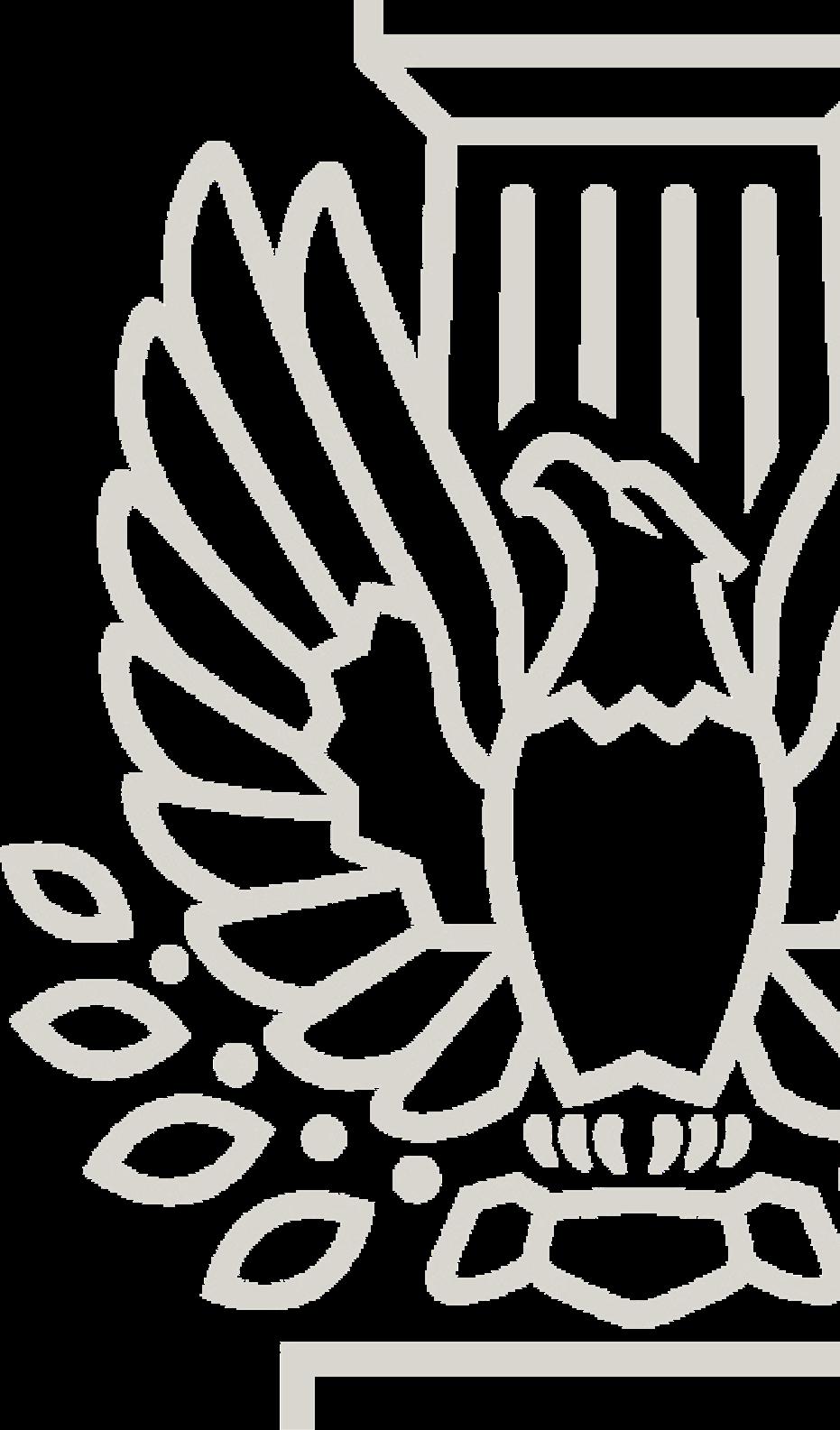

AIA College of Fellows
Founded in 1952, the College of Fellows is composed of members of the Institute who are elevated to Fellowship by a jury of their peers. Fellowship is one of the highest honors the AIA can bestow upon a member. Elevation to Fellowship not only recognizes the achievement of the architect as an individual, but also elevates before the public and the profession those architects who have made significant contributions to architecture and to society.
Muza Conforti.
In this Issue | Q4 2025
from the Chancellor
& Updates 2022 Latrobe Prize Update
Announcement: 2026 COF Secretary
Interview with Lisa Lamkin, FAIA
Architecture Week Grants
Interview with Jon Penndorf, FAIA
2026 Chair of the COF Regional Representatives
2024 COF Component Grant Recipient: AIA Utah: Wasatach Connect
Remembering Robert A. Odermatt, FAIA
Chancellors Cup Tournament Updates
Regional Representative's Message
Fellow Spotlight: Where Does Your Medal Live?
Daylighting Design for Circadian Health in Existing Buildings: Upjohn Research Drives Practical Innovation in Architecture
Call for Proposals: 2026 Leslie N. Bony Spirit of Fellowship
The Impact of Global Trends on Future Practice Previously Published in 2025 Q3 YAF Connection
Announcement: 2026 YAF Advisory Committee
Chancellor
Vice Chancellor Bursar
Secretary
Kate Schwennsen, FAIA
Jeanne Jackson, FAIA
William Hercules, FAIA
Steven Spurlock, FAIA
Editor-In-Chief
Associate Editor
Chair, Regional Representatives
Executive Director, College of Fellows
Jessica O'Donnell, AIA
Beresford Pratt, AIA
Stuart Pettitt, FAIA
Muza Conforti
COF RESOURCE GUIDE
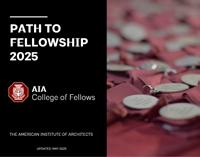
COLLEGE OF FELLOWS NEWSLETTER
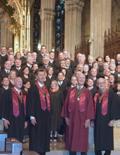
COLLEGE OF FELLOWS COMPONENT OPPORTUNITY GRANT APPLICATION
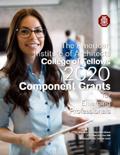
COLLEGE OF FELLOWS REGIONAL REPRESENTATIVE
WELCOME PACKET COLLEGE OF FELLOWS FORMER CHANCELLORS
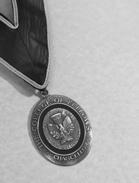
DIRECTORY YAF CONNECTION ARCHIVE
Message from the Chancellor
The Year in Review
By Kate Schwennsen, FAIA

This “Message from the Chancellor” will be my last, as we prepare to conclude 2025 and welcome the 2026 Executive Committee to lead the College of Fellows. As with all end-of-year messages it is an opportune time to reflect on past accomplishments, and consider the future. What did we get done? What remains to accomplish?
Almost a year ago I pledged to advance the College according to its purpose, a purpose which is worth stating:
“The purpose of the College of Fellows is to Stimulate a sharing of interests among Fellows, Promote the purposes of the Institute, Advance the profession of architecture, Mentor Young architects, And be of ever-increasing service to society.”
We, the 2025 Executive Committee and many others, have accomplished a lot toward this purpose. I cannot imagine a more productive Executive Committee of the College: Jeanne Jackson, FAIA, Vice-Chancellor; Steven Spurlock, FAIA, Secretary; and Bill Hercules, FAIA, Bursar. Muza Conforti is the College's excellent Executive Director. This group has been ably supported by members on our committees, AIA elected leadership and staff, the Former Chancellors of the College, the Regional Representatives of the College, and individual Fellows
who have provided gifts of time, talent and/or treasure. I thank each of you.
So, what did we get done?
PRACTICE-FOCUSED RESEARCH
Hopefully you read the recently released Fall special issue of The Quarterly, “Latrobe Prize Retrospective: Advancing Change Through Research”. This issue highlights this year’s Prize winner and looks back at the past recipients to celebrate again their impact and accomplishment, and the great return on investment that the College and profession receive from this Prize.
The Latrobe Jury met in early September at the offices of Rowland Broughton Architecture in Denver, CO. Thanks to them for their hospitality. Three excellent finalists were interviewed, selected from 39 proposals, the largest number of proposals ever received for the largest Latrobe Prize yet awarded, $150,000. You may recall that this year’s call for proposals was focused on architecture’s contributions to human health, 'demonstrating theoretical AND practical connections between the built environment and human health, and 2) demonstrating how architects are essential to facilitating changes to the built environment to positively affect the health of communities.'
The jury, chaired by D. Kirk Hamilton, PhD, FAIA Emeritus, had exceptional depth, and received and reviewed many excellent proposals. It was difficult to select just one to award.
We are very excited that the recipient of the 2025 Latrobe Prize is the proposal, “Facades for Public Health: Smog-Eating Panels.” Doris Sung, AIA, and her broad and deep team, which includes among others Russell Fortmeyer, a sustainability engineer at Arup Engineering, presented a very convincing proposal. They are already well into their research. The hope is that an operational pilot project will be a bus stop or bus stops in place for the 2028 LA Olympics, which would provide great visibility for the Latrobe Prize.
The College supported additional practice-related research with $25,000 sponsorship of the AIA Upjohn Research Initiative, which provided four new research grants. Brief descriptions of those grants are available at aia.org/aiaupjohn-research-initiative
MENTORSHIP
As part of our effort to mentor the next generation, the College awarded $50,000 in Component Grants to 10 proposals out of the 25 submitted, all in support of mentoring the next generation of architects. We do this annually. The Call for 2026 proposals appears on page 37 of this issue of 'The Quarterly.' Encourage your local components and especially Young Architects to submit proposals.
The newest member of the Executive Committee, this year it was Bill Hercules, FAIA, serves as a liaison to the Young Architects Forum Advisory Committee. The College benefits at least as much from this relationship as does the YAF. We republished several excellent articles from the YAF “Connections” publication, and Fellows continued to provide direct mentorship through the YAF-COF Align Mentorship Program. 2025 YAF Chair Sarah Woynicz, AIA, provided a comprehensive review of the YAF activities during the College’s Annual Business Meeting.
FURTHERING FELLOWSHIP
We have been very active in advancing Fellowship this year. A group of former jury chairs, Steven Spurlock, RK Stewart, and Lisa Lamkin, updated the 'Path to Fellowship' slides. We presented the updated program via AIAU, and have made the slides available to any and all. Thank you Jessica O’Donnell, AIA, College of Fellows editor for the graphics for the updated program.
We have used that update as a launching pad for a series of presentations to various audiences, including the “Next to Lead” class, the Small Firm Exchange, the Women’s Leadership Summit, and we’ve submitted a proposal for AIA26. We are participating on the AIA Leadership Exchange calls, and Regional Representatives Meetings. Planning has begun for a Fellowship Exhibit at the Octagon in 2026, in collaboration with the AIA and the Foundation.

In the spirit of advancing Fellowship, each year we award the Leslie N. Boney Spirit of Fellowship Award. This year’s jury selected Lisa Lamkin, FAIA, as the 2025 Leslie N. Boney Spirit of Fellowship Award recipient. Congratulations, Lisa! The call for nominations for the next award appears elsewhere in this issue.
The annual Conference on Architecture and Design, AIA25, as always, was a particularly busy time for the Executive Committee and the College. We welcomed the new Class of 2025 Fellows at the Investiture ceremony in the extraordinary Trinity Church. There were 83 New Fellows invested, along with 10 Honorary Fellows, the largest number of Honorary Fellows ever. We hope this trend of increased Honorary Fellows continues. The Jury of Fellows, led by Chair Carl D’Silva, FAIA, did an excellent job, as did Muza Conforti in staffing the Jury. Last year’s jury was unusually large compared to the historical 7-member jury, with 11 members. Carl did a remarkable job of leading the Jury, and afterwards making recommendations to the AIA Secretary’s Advisory Committee and Board about future jury sizes and protocols. The recommendations were approved. The AIA Rules of the Board now call for a 9-person Jury of Fellows. Thank you, Carl and thank you AIA Board.
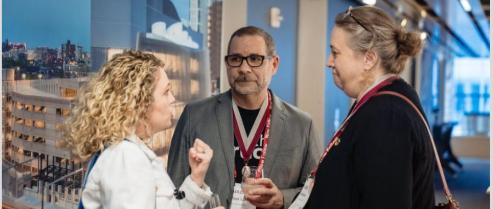
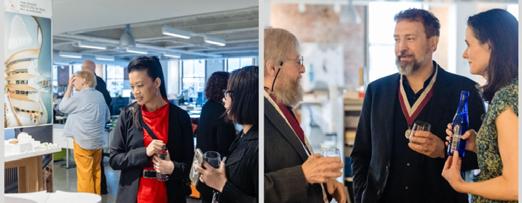
The 'Path to Fellowship' slides can be downloaded here
Photos above from the Celebration with the Fellows at AIA25. Courtesy of AIA.
A print of the sketch by Tim Hawk, FAIA, was shared with the new Fellows. For the second year in a row several other award recipients were recognized at the Investiture. This combined recognition enriches the experience for all. Many of the new Fellows attended the AIA Awards Gala that evening at which they were recognized by Object. The Celebration with the Fellows on Friday night was generously hosted by Payette at their offices. We thank them. A good time was had by all.
Other events included the 13th rendition of the 2+2 seminar, and a session sharing the results of the 2022 Latrobe Prize research. The Executive Committee held one of its quarterly meetings with the former Chancellors, and had the pleasure of lunch with the Regional Representatives. During the Business meeting Bylaws Amendment 2.41 passed, to allow members who apply for Fellowship but become deceased during the jurying to continue to qualify. The College supported this amendment.
The Council of Regional Representatives was ably led by Stu Pettitt, FAIA, who we thank for his service. These Fellows provide the connective tissue for the College, sharing best practices, and serving as liaisons between the AIA Fellows within their Regions and the larger AIA College of Fellows. All positions except one were filled in 2025. Jon Penndorf, FAIA, will begin a 3-year term as the Council’s Chair in 2026.
The Executive Committee meets four times each year in-person and every six weeks virtually with an occasional special session. The in-person meetings are a couple of days in duration and always include a reception for local Fellows, an important part of the College’s mission of outreach and

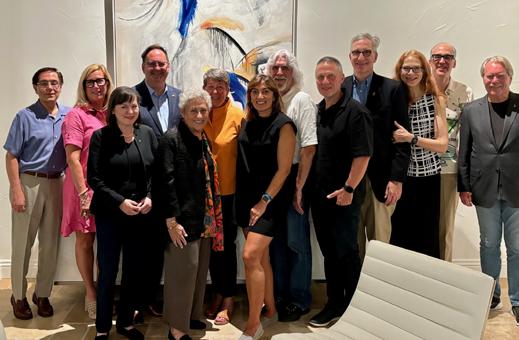
Fellowship. We held our Spring 2025 meeting in beautiful Greenville, SC. The firms of Ls3P and Craig Gaulden Davis generously provided us with meeting space. Ben Rook, FAIA, graciously hosted the reception at his beautiful home and garden. Thank you to all of those Upstate Fellows.
We held our Fall meeting in Palm Springs, CA, at the office of Kristi Hanson, FAIA. Former Chancellor John Sorrenti, FAIA, hosted our reception at his beautiful home, where we took advantage of his amazing yard and view to have a miniInvestiture for Kristi, who was elevated in 2020, the COVID year, and could not attend the delayed Investiture ceremony.
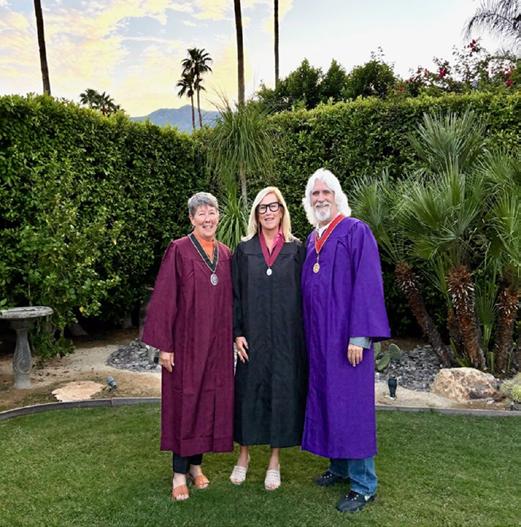
Photo above from the mini-investiture for Kristi at the Fall Meeting. Courtesy of Muza Conforti.
Photo above: COF Fall Meeting happy hour. Courtesy of Muza Conforti.
Photo above from the Executive Committee Spring Meeting. Courtesy of Muza Conforti.
COMMUNICATIONS
To “stimulate a sharing of interests” among Fellows, communication is a must. Secretary Spurlock led our communications efforts. He worked alongside editor Jessica O’Donnell, AIA, to produce not only the regular four issues of 'The Quarterly,' but two special issues: The early Spring issue introduced the 2025 Class of Fellows; The mid-Fall issue announced the newest recipient and provided a retrospective of the Latrobe Prize.

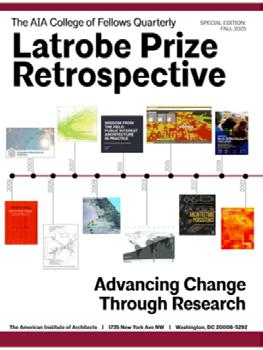
During the Annual Business Meeting Secretary Spurlock shared readership statistics for 'The Quarterly,' illustrating its global reach and growing readership. He also shared a link to the College’s LinkedIn page, and encouraged more to follow the COF via this social media platform. The College’s discussion page on the AIA Community Hub is widely used by Fellows to discuss issues of importance to members. The ExCom reports out on the College’s activities to the broader leadership during the Institute’s quarterly Leadership Exchange calls.
The Annual Business Meeting of the College, which was held October 16, provides a good venue for communications across the College. Much of this “Message from the Chancellor” was shared at that meeting, as were reports from AIA Interim EVP/CEO Stephen Ayers, FAIA and AIA President Evelyn Lee, FAIA, and Strategic Council Moderator Jessica O’Donnell, AIA. Also at this meeting we shared a moment of silence for the Fellows who have passed since we last met, including three Former Chancellors. If you were unable to attend the meeting, a recording can be accessed via the Community Hub.
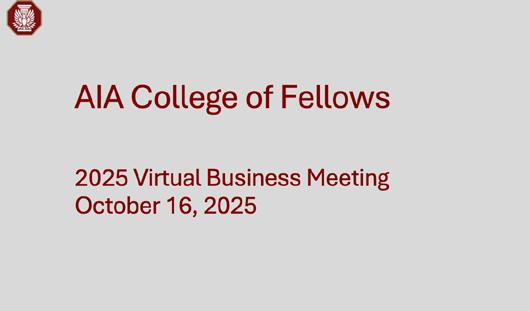
FIDUCIARY RESPONSIBILITIES
There was important activity happening behind the scenes in 2025 as the Executive Committee dug into some necessary business. Vice-Chancellor Jackson led the serious effort to update our governing and operational documents. The Bylaws of the College of Fellows Fund were revised and approved by the ExCom. The Standard Operating Procedures of the College have also been revised and approved. Revisions to the Bylaws of the College of Fellows have been approved by the COF ExCom and forwarded to the AIA Board of Directors for approval.
Bursar Hercules led the effort to seriously review the College’s financial position and financial consultant. The Annual Meeting of the College of Fellows Fund was held October 16th, at which the Bursar, who is also the Treasurer of the College of Fellows Fund, made a full report. As you may be aware, the Executive Committee serves dual roles for two separate organizations. The College of Fellows is a subset of the AIA. The College of Fellows Fund, is a separate 501(c)3 supporting the work of the College.
The Annual Business Meeting slides can be downloaded here
All editions of The Quarterly publication can be accessed here
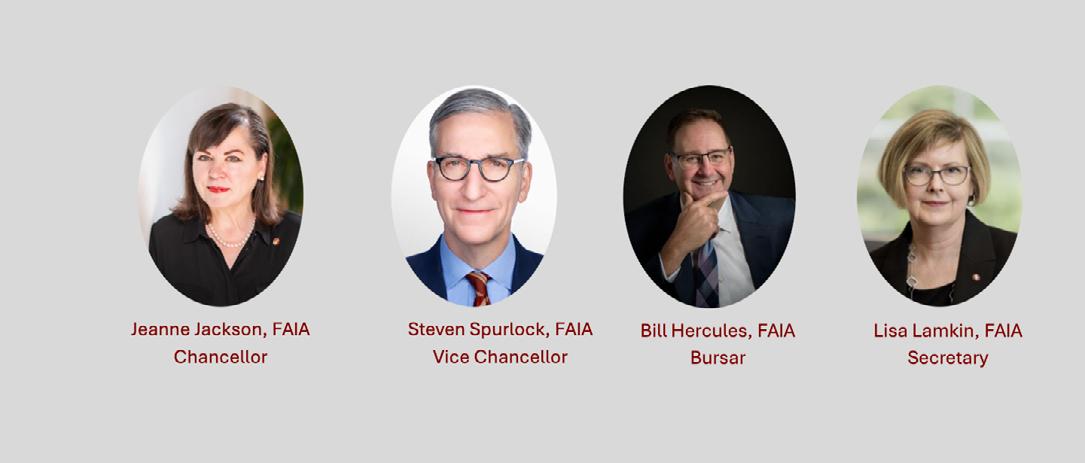
As Bill reported during the meeting, as of December 2024 the College’s total liabilities and net assets were $3,669,524. The majority of the balance sheet is the investment fund, which had a balance of $3,498,464. At the time of the Annual Meeting the balance had grown to $3,850,556, a year-to-date growth rate of 9%. Last year, the fund outpaced inflation by more than double, and is outperforming that this year.
The College’s increased focus on the Fund’s performance and management has led to the recent engagement of our new Fund manager, Wilmington Trust, through a competitive process. Wilmington Trust also manages the AIA’s operating account as well as the AIA Foundation’s fund. The Executive Committee has named two new groups to help accelerate the Fund’s growth, a Finance Committee, and a Fund Expansion Task Force.
There are many ways for you to support the College of Fellows Fund. I hope that this record of 2025 activities of the College encourages you to invest in our continuing work.
Finally in terms of responsibilities, planning for 2026 is well underway, led by Jeanne Jackson, FAIA.
LOOKING AHEAD
What remains to be accomplished? Thankfully, the purpose of the College is a purpose without end! I am confident that the 2026 Executive Committee will continue to support the success of the AIA, its Fellows and its members, and to gather them in Fellowship. I am also confident that the members of the College, the AIA’s Fellows, will continue to provide leadership for the profession and the Institute, and be of everincreasing service to society. Further, we sincerely welcome Carole Wedge, FAIA as the new ECP/CEO of the AIA. I am confident that she will support the College, and I encourage her to reach out to the College to help her achieve her goals for the Institute.
It has been my honor and pleasure to serve as the 63rd Chancellor of the AIA College of Fellows. Thank you for trusting me. Congratulations to the 2026 Executive Committee: Chancellor Jeanne Jackson, FAIA; ViceChancellor Steven Spurlock, FAIA; Bursar Bill Hercules, FAIA; and the newest member of the ExCom, Secretary Lisa Lamkin, FAIA. They will lead us well, raise us up, and make us proud.
Kate Schwennsen, FAIA 63rd Chancellor AIA College of Fellows
Announcements & Updates
PATHWAYS TO FELLOWSHIP
(right to left) Chancellor Schwennsen, FAIA along with Fellows Abi Brown, FAIA, Gracilea Carrillo, FAIA, and Karen Lu, FAIA presented 'Your Path to Fellowship: Elevating Women to FAIA' during the Womens Leadership Summit in Atlanta on November 4, 2025. Photo courtesy of Muza Conforti.

MENTORSHIP HIGHLIGHTS
The Michigan Fellows Fund for Equity Grant was awarded to Odette Giorgees, RA. Odette is a lead architect for Gateway Engineering, an Architectural Engineering firm located in Shelby Township. Odette became a licensed architect in Michigan this year at the age of 24. As noted in her reference letter from the president of Gateway Engineering, Dr. Joseph Vaglica, PE – “Odette exemplifies the very qualities this fellowship (grant) seeks to support – persistence, leadership creativity and a commitment to equity in the profession...”
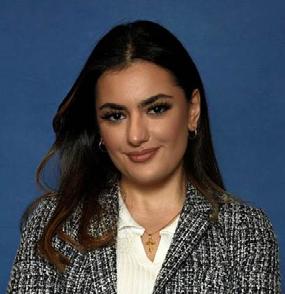

RESEARCH UPDATES
We are excited to share our Latrobe Prize Retrospective that highlights how the College is advancing change through research. This special edition of COF Quarterly provides an overview of each of the previous 11 prizes, links to their full reports, and insights into the 2025 recipient's research.
The Latrobe Prize Retrospective can be found on issue


WAYS TO ENGAGE
The AIA's Small Firm Exchange (SFx) group recently held a 'Demystifying AIA Fellowship: A primer for small firm practitioners.' Thank you to Alicia Belton, FAIA, Janet Bloomberg, FAIA, Greg Ibanez, FAIA, and Kate Schwennsen, FAIA.
A flyer of key takeawys can be found on the SFx website or through the SFx community hub
FELLOW SPOTLIGHTS
Congratulations to Lisa Lamkin, FAIA, our 2025 Leslie N. Boney Sprit of Fellowship award recipient!
This award recognizes continuous, exceptional service and dedication to the College. Applications for the 2026 Boney award will open in Q1 of 2026.

CHECK IT OUT
Charles Matta, FAIA Emeritus of Virginia, received The AIA’s Fuller Award for his photograph 'Rouge Delight.' The AIA St. Louis National Photography Competition honors architects, design professionals and architectural students whose talents are showcased in their photographic interpretation of the designed environment. The Al Fuller Prize specifically recognizes photographic excellence of a U.S based subject.
Congratulations to Mr. Matta for his photograph ‘Rouge Delight ©’
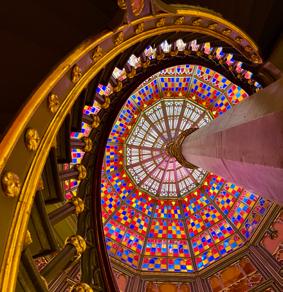

REGIONAL UPDATES
The newly formed AIA Brooklyn WIA Committee held a highly successful panel discussion, “Passion, Practice, Purpose: How Architects Shape Meaningful Careers,” on October 20th at Pratt Institute. NY Regional Representative Laura Heim advised them on the creation of this panel and presented a fellowship overview. Seven Fellows, representing each Object, spoke about their professional path leading to recognition. The achieved goal was to mentor young professionals and increase the general understanding of the fellowship process.

CALL FOR CONTRIBUTORS
The COF Executive Committee and editorial team invite you to contribute to the 2026 editions of the Quarterly. We welcome the submissions of relevant content that aligns with our theme for each issue (Q1 | Regenerative Nation, Q2 | Engagement Q3 | Mentorship, Q4 | Research).
If you are interested, please fill out this form
2022 Latrobe Prize Update
CommonSENSES: Standards for ENacting Sensor networks for an Equitable Society

Article By Michelle
Laboy, Assoc. AIA, PE, LEED BD+C
Research Collaborators: Amy Mueller, Dan O'Brien, and Moira Zellner.
Scientific evidence shows that vulnerable populations in certain geographies of the globe, especially the global south, will be disproportionately affected by climate change. This requires an urgent and equitable response, a burden that should fall primarily on developed countries. Although this assessment is based on research at global and regional scales, our research suggests that hyperlocal or “microspatial” inequities are significant too, with impacts unevenly distributed within cities and even sometimes streetto-street within neighborhoods. In dense urban environments and coastal cities, constrained public land and funding can limit space for infrastructure, especially the more resilient nature-based solutions. Large urban redevelopment projects have great potential to mitigate local climate hazards through equity-focused site planning with, for example, targeted green infrastructure interventions on site. A more generous approach to architecture can turn those into community space within privately owned public space (also known as POPS). We see an opportunity for research to help better define site specific goals during design, to measure the impacts of implementing these site planning strategies, and to model the aggregate impacts of a network of retrofit projects in a neighborhood.
TRANSFORMING THE PRACTICE OF SITE ANALYSIS
Our Common SENSES project has sought to reimagine site planning and design as a catalyst of regeneration for climate mitigation and adaptation, developing novel ways of integrating better data and community voices in that process. Site analysis is already a research-intensive part of architectural practice. This early phase of a project defines contextual problems and opportunities, invites questions and exploration, and engages with local histories and future imaginaries of the place to inform design strategies that make architecture a “good fit.” Yet most site research is limited by the data we have available, relying on historical data about the regional climate, e.g. temperature, precipitation, and prevailing winds. But that reality is changing quickly and can be really different locally than at the nearest formal weather station. We know the path of the sun and can model shadows and daylight, but we cannot easily characterize the spatial and temporal variability of environmental conditions around a site. Some places have especially high access to data, whether through proxies or actual measurements, as it is becoming more available, but many places have less. Some specialized researchers can also do small scale modeling of sites but it is computationally expensive, and questions remain about their reliability in complex environments. Air quality is particularly
hard to model, and even urban heat island effects, both of which can be driven by urban street canyons, grade elevation, surface reflectivity, evapotranspiration, soil types, topography, building geometries, and other drivers of microclimates. These dynamics are complex, interconnected, and non-linear and therefore do not easily lend themselves to rules-of-thumb. We would likely design differently if we could know which side of a site had higher levels of air pollution or select materials differently if we knew when or where noise reached unhealthy levels. We would also reconfigure spaces if we knew that a heatwave could be significantly worse in a portion of the site where a sensitive population (e.g. elderly or children) is or is planned to be.
When working in environmental justice (EJ) communities— areas that experience disproportionate environmental hazards— especially in densely built urban areas with risk of displacement, better data could inform how a building, beyond being a “good fit,” can catalyze local regeneration and reparation. This can improve the community benefits framework, which is typically negotiated in high-value urban developments in the form of community benefits agreements or community amenities, by perhaps being more specifically tailored to the site. If architectural responses to site conditions could make community benefits more equitable, would community access to this data change the site plan review and approval process? If we could quickly visualize the dynamic environment around a building and model mitigation strategies for environmental health hazards before, during, and after construction, would community engagement move from approval towards co-
design? Would cities allow more performance-based zoning requirements for open space?
A PILOT STUDY
The City of Chelsea, our collaborator in this research, is a great case study to understand this potential: an EJ community of immigrants on Boston’s harbor, near the airport, with an urgent need for more housing, and yet only 23% open space. For the last few years, the City has worked with researchers from our team and others to measure the impacts of infrastructural decisions, e.g. air quality changes from electrifying public transit, or the effects of tree planting on temperature. The City had an interest in measuring the impact of site design in developments because much of the limited green infrastructure added since 2003 happened within building sites, increasing vegetated cover from roughly 12% to 14% in 20 years. There are no mandates for GI in development; but the City negotiates community benefits in each planned development, and they want more data on potential mitigation and impacts of GI so that site design can better respond to local hazards and community needs and support future infrastructure planning. In 2022, the city had a significant industrial redevelopment project about to break ground near one of the most vulnerable neighborhoods. The community had negotiated a significant increase in green infrastructure on site to mitigate heat and flooding based on their lived experience and observations. The city was interested in knowing if the resulting design would make enough of a difference where it mattered, and our research team had the tools to measure impacts before and after, and to model
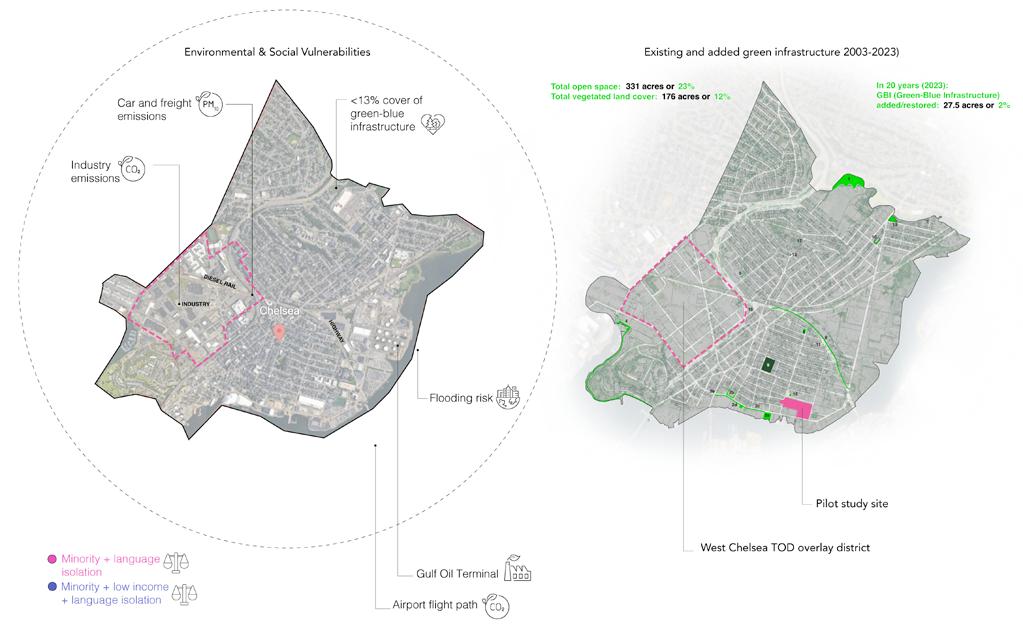
Image Above: Map of the City of Chelsea shows the intersection of social and environmental vulnerabilities (left) and the green infrastructure projects in the last 20 years (right), highlighting the location of the pilot site for this study and the last remaining major industrial / commercial district available for housing development where green infrastructure could be added.
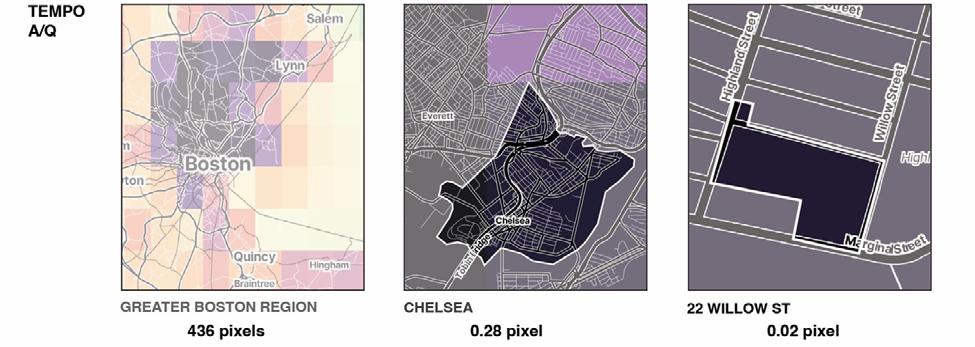
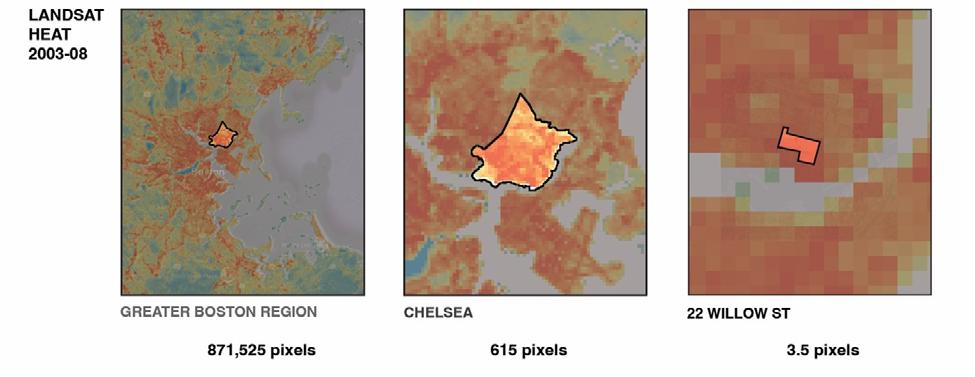
different and expanded solutions for what could have been and for the future.
Architects and planners often don’t have data at the spatial resolution needed to understand the micro-spatial and temporal variability around a site during design, especially in complex urban environments, or to inform more nuanced analysis and site-specific solutions. For example, using Landsat satellite images are available from NASA for most or all of the United States, allowing an estimation of land surface temperature in grid cells that are 0.06 mi x 0.06 mi, or approximately 100 m x 100 m. The Chelsea study site is about 3.5 of such grid cells, or pixels, meaning these data could potentially reveal different temperatures in a highly localized space. Maps translating the data into temperature were produced for the Boston area by researchers, but the process of downscaling and visualizing these proxies for surface temperature was based on satellite imagery from 20 years ago. A new Landsat satellite launched in 2021, but there is still no easy process of converting from surface temperature to air temperature, and researchers may only do that for specific areas. On the other hand, the very new satellite Tempo provides some air quality data that is publicly available, but the resolution is so low that the entire city of Chelsea fits inside less than one pixel. No local differentiation can be gleaned from that.
Sensor networks have the potential to generate more useful data on environmental hazards at a resolution that can support better decisions about the design of buildings, infrastructure, and open space. The 2022 Latrobe Prize theme, “Buildings at the Intersection of Human and Planetary Health” invited research that supports thinking of architecture beyond the design of buildings to create positive outcomes for people and communities, to achieve an equitable, resilient, and healthy built environment and neighborhoods and help realize solutions for climate action. We saw a unique opportunity for our research to answer that call, and we set out to design a pilot or demonstration of how a sensor network could provide higher resolution data around a site.
The building on the study site would reorganize truck traffic to the south to keep air pollution away from residents to the north and added green infrastructure to reduce flooding and provide a more beautiful and cooler path for neighbors walking through or past the site to the waterfront. We could measure those impacts, model how those interventions can connect buildings into a broader network of green infrastructure solutions to mitigate hazards and demonstrate how to think about site planning in architecture projects as essential to climate equity and action.
Images above: currently available resolution of proxy satellite data converted to estimates of air pollution (above) and heat (below). Both are showing the number of pixels showing variability across the whole Boston region (left), the city of Chelsea (center), and the pilot study site (right).
Our sensor network showed that although Landsat surface data were strongly correlated with real time sensor data for heat index during a 2024 heat wave, some of the lowest and highest peaks in the sensor data were unexpectedly different than projected by satellite imagery, which particularly underestimated heat in some areas that already had higher green space or higher pavement, and overestimating heat near the water. The sensor network also showed that air quality was significantly different on different sides of the site, with residential areas reaching unhealthy levels much more frequently than the truck route during construction but also showing highest improvements after construction. These real measurements can be very useful insights to guide development decisions that impact surrounding areas during and after site construction.
SHARING LESSONS WITH PRACTITIONERS
The challenge with sensor networks is that sensors can be expensive, require person-hours for installation and management, and generate data requiring complex analysis to garner these insights, which is why an important goal of our research is to generate knowledge that can help practitioners “right size” the sensor network for their purposes and develop tools to understand the information. This is the purpose of the Common SENSES playbook, which has a first published version based on the Latrobe Prize research. The playbook will continue to develop based on ongoing research in collaboration with municipal and community partners along Boston’s Blue Hill corridor in Roxbury, funded by a NSF grant we received after the Latrobe Prize.
The playbook provides practitioners with advice on how to design a network of sensors around a project. The most important guidance is that you should design the network with a clear set of questions in mind. For our pilot in Chelsea, we had three questions: (1) Spatial Heterogeneity: how much variability is there around a site? This meant hypothesizing what might affect some areas more than others in terms of heat or air pollution and creating a network that covered any major changes in the physical context and traffic; (2) Before and After: did the green infrastructure, new building massing, and traffic changes in the new development change (hopefully improve) the distribution or intensity of hazards? That meant we wanted sensors in the areas where green infrastructure was added, and because we wanted to see if the impacts extended beyond the site, we also added sensors at least two blocks away in each direction; (3) Seasonality: Are effects more pronounced at certain times of the year? That meant we wanted to have data for at least one full cold and one full hot season (or, when combined with #2, one full year before and after the construction, but also after occupancy—data collection is ongoing until a new tenant moves in). You may have similar or different questions. For example, your context may not be as variable (spatially, climatologically) as our site in Chelsea, and if you don’t expect as much heterogeneity, you may be fine with lower resolution data provided by a smaller or less dense network of sensors over a shorter period of time. Depending on the context, the size of the site, and the research questions, the
sensor network may be limited to the site itself or may need to extend into the surrounding area. The important part is ensuring the measurements capture the important variability and time period for answering your site questions.
ENGAGING COMMUNITIES IN DESIGN
We shared the College of Fellow’s goal to elevate research findings to be usable and applicable to Architect Practitioners in design decision-making and to make research relevant and valuable to clients. To this end, the Latrobe Prize proposal included community engagement activities, which happened through two coordinated courses focused on the same site: a community-based design studio at the School of Architecture, and a participatory modeling course in the Policy School. Chelsea city planners and city council members identified an

area in which to test how the findings from the pilot site can translate to design. They invited us to jointly explore planning strategies for a new transit-oriented development district in a floodplain in West Chelsea, with new affordable housing expected in an industrial area similar to, and not too far from, the initial pilot site. For the City of Chelsea this new zoning overlay district is potentially their last large redevelopment opportunity to build enough green infrastructure (GI) to have a significant impact. We expanded our partnership with community members and youth from La Colaborativa, a local non-governmental organization that supports and advocates for Chelsea residents. We were able to demonstrate with visualizations of simulated and sensor data how to increase density while also increasing vegetated cover, providing benefits for flooding mitigation, temperature regulation, recreation, and ecological connectivity. The community partners and the City are excited to integrate these data and modeling approaches into their ongoing strategic plans, with architects and planners as co-designers. As faculty educating future practitioners and working on community-based research in and around Boston’s communities, we see the opportunity for architects to contribute to healthier places and more equitable communities with better data, tools, and skills that can expand the transformative impact of design.
For additional information, download the full CommonSENSES Playbook from the Northeastern University website here
Image Above: Air temp. /RH sensor network (numbered pins) over map of satellite-based estimates of surface temperature (yellow-orange pixels), highlighting pilot site.
Interview with Lisa Lamkin, FAIA
By Steven Spurlock, FAIA with foreword by Jeanne Jackson, FAIA
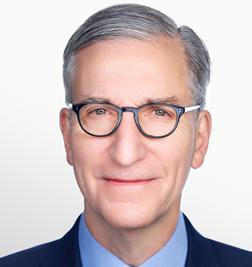

Each year, as outlined in the College's Standard Operating Procedures, the Nominating Committee of the AIA College of Fellows assembles to carry out one of its most rewarding responsibilities: selecting the next leader who will help steer the College with insight, experience, and a healthy dose of vision. This year’s process was no exception—marked by thoughtful discussion, spirited debate, and an exceptional slate of candidates.
The 2025 Nominating Committee was composed of a distinguished group whose collective expertise ensured a rigorous and inspired review:
• Chair: Jeanne Jackson, FAIA - COF Vice-Chancellor
• Tanya Kataria, AIA - YAF Representative
• Harry Falconer, FAIA - COF Member at Large
• Terry Brown, FAIA - Former AIA Board Member
• Sherif Anis, FAIA - COF Regional Representative
• Carl D’Silva, FAIA - Former COF Jury Chair
After an in-depth evaluation of all submissions, it was very clear that the candidates for Secretary were not only well-qualified but deeply committed to advancing the work and values of the College. One candidate emerged whose leadership, service, and professional excellence resonated unanimously with the Jury.
The Jury recommended Lisa Lamkin, FAIA, LE Fellow, LEED AP, and former AIA College of Fellows Jury Chair, to the College to serve as the 2026/7 Secretary of the College of Fellows. At the College of Fellows Annual Meeting, held virtually in October, Lisa’s nomination was enthusiastically accepted, and we warmly welcome her to the COF Executive Committee.
Lisa’s remarkable record of service across the AIA spectrum—local, regional, national, and within the College itself—combined with her distinguished professional work and dedication to mentorship, made her nomination both compelling and well-earned. Her thoughtful leadership and steady commitment to elevating the profession promise to enrich the Executive Committee and the College as a whole.
To help you get to know Lisa even better, Steven Spurlock, FAIA—the College’s 2024/2025 Secretary — posed a series of thoughtful and lively questions. Their conversation offers a glimpse into Lisa’s path, her passions, and the perspective she brings to her new role.
Thank you, Steven—and thank you, Lisa, for sharing your story with the College!
Jeanne Jackson, FAIA
2025 Vice Chancellor
Steven Spurlock, FAIA (SS): Let’s start at the beginning. Where did you grow up?
Lisa Lamkin, FAIA (LL): I like my dad was born in Detroit, MI; moving soon thereafter to a suburb Farmington Hills.
SS: Are there particular childhood experiences that contributed to your interest in architecture?
LL: I had opportunities to experience great Architecture in small doses as a young child attending events at the spectacular Detroit Fisher Theatre, exposure to the great Diego Rivera murals at the Museum of Art and summer visits to the beautiful Belle Isle Aquarium. My interest in Architecture as a pursuit started seriously with an opportunity to visit Europe twice on scholarship with a youth orchestra in High School. Experiencing cities with a rich architectural heritage that are much less car-centric was an eye-opening contrast to my youthful impressions of home; absent sidewalks, strip malls, asphalt parking lots and highways littered with billboards and gas stations.

SS: Looking back, when did you first realize that you wanted to be an architect?
LL: After rejecting the expectations of my music teacher to become a professional violinist and my English teacher’s encouragement to be an English major; a guidance counselor noted I was one of the only girls in Junior High drafting class and suggested Architecture. I entered the University of Michigan with that focus and affirmed quickly it was the right fit!
SS: Was there a particular reason you selected Michigan to pursue your studies in architecture?
LL: I tried not to pick the easy choice, a great school in my backyard that my parents and maternal Grandfather were alumnae of. After looking further afield gaining acceptance letters and scholarships from east coast and west coast schools that were still a huge financial burden, I then made the smart choice.
SS: Describe the Community Design Studio experience during your graduate work.
LL: The narrative of Waddell family experience in Detroit during the Great Depression was very present in my childhood as they remained nearby in the area. Dad was the baby, born in 1926. The disarray that Detroit was in during my formative years was sadly evident but also influenced my interest in how cities can and should work better. The Community Design Studio led by James Chaffers, FAIA challenged us to consider privilege as an obligation for service and architecture in the context of justice. Our assigned design problems brought us to inner city Detroit just over a decade after the riots, where vacant lots still presented visible testimony. I learned how to listen, take responsibility, work hard, be empathetic and be optimistic for the future. Jim continued to mentor students for decades and was the senior design juror for the Martin Luther King Jr. Memorial competition.
SS: What surprises awaited you in your early employment experiences?
LL: My biggest surprises revolve around the unexpected culture shock of moving from the middle north to the middle south of the country. The culture shock was not just about country music, tex-mex food or my Yankee accent. Women were much more visible in my graduating class than they were in my local AIA chapter. The Architects Wives club was still active and the Women in Architecture committee yet unformed. There were plenty of eye-roll moments; thankfully balanced by employers and colleagues who gave precedence to competence and achievement. Our first Dallas woman fellow Jane Landry FAIA (joint fellowship with Duane Landry FAIA) in 1988 was a indicator of the many positive changes to be made in the decades following.
SS: What advice do you have for young architects?
LL: Build a resume of experience punctuated by specific accomplishments; not a list of positions occupied. Consider that failure or rejection might be a nudge in a better direction; however, after reflection you believe in your path, be relentlessly persistent. Avoid leaning too much on friends and fans who won’t tell it like it is. Seek relationships with colleagues that inspire you, challenge you and advise you honestly.
SS: What led you to your special interest in Education?
LL: The quick answer is one great project. We had our first opportunity to design a new Elementary School at a watershed moment for the firm. We had grown to the point where the development of specialty studios was an idea that was beginning to coalesce, and I was at the confluence of opportunity at the right time. However, my interest in Education is in my DNA as the daughter, daughter-in-law, and granddaughter of teachers. Their lived experience certainly influenced my belief in the power of Architecture to support, nurture and influence our country’s next generation, and why it matters.
Photo Above: Lisa (right) and her husband, Bob, (left) at a Michican National Champion pep rally.
SS: How have you seen the practice change?
LL: We have successfully weathered many downturns and challenges over our 40 years and little has stayed the same operationally as you can imagine; with our growth from the day when I was employee number 5 to now a staff of 170. As with any firm over the last 4 decades changes in the use of computer modeling and information technology have been dramatic; we have strategically evolved to stay on the leading edge while avoiding the bleeding edge. What hasn’t changed is our core values: People first, Honest Partnership and Commitment to Craft.
SS: Regarding your professional work, what stands out as a singular success?
LL: Working alongside my partners to develop our firm into the experienced, talented, and resilient organization it is today has been both joyful and rewarding, presenting its fair share of challenges. One of the standout projects in our portfolio is the Woodrow Wilson High School campus for Dallas ISD. This restoration and addition project involved a significant 1924 landmark building and was recognized with a Preservation Dallas Achievement Award for its first phase. The historical significance of the structure, along with the numerous technical challenges we faced, made the successful completion of this project particularly gratifying. Building on this success, we have since returned for four additional phases to fully realize the campus's potential.
SS: Your bio on the BRW website states, “Lisa’s true passions lie in music and education. These two influences shape her life both in and out of the office.” Please explain. LL: The influence of music education significantly impacted my early academic success. The importance of teamwork was made clear as a member of the Marching band, the challenges of leadership were highlighted as the concertmaster of an orchestra, my math skills were amplified through music theory and my social skills tested at gigs with a professional strolling violin group. Making room in our schools for music and the arts so that kids can have experiences like these is a critical investment that benefits all students whatever path they choose later in life.
SS: Tell us what you are currently working on and some of your favorite projects.
LL: Although I do have a favorite child (as I have one daughter Elyssa) it is impossible to name favorite projects over decades. Our next success will be Eastern Hills Elementary for Fort Worth ISD starting construction soon; our second new school for the district bookending several restoration addition projects.
A recent highlight is our recognized success with the reimagining of Dallas ISD Geneva Heights elementary. We were commissioned to do a replacement school; however, with the encouragement and support of the local community we preserved the original 1931 Art Deco structure and were recognized with an Achievement Award by Preservation Dallas.

Many favorites have a common theme of preserving irreplaceable resources and re-imagining them for the future
Dallas city hall by I M Pei is one such irreplaceable resource that faces potential demolition due to long term neglect and short sighted influences It is inspiring to see Dallas Fellows advocating for the preservation of this landmark, reminding us to be voices of reason in our communities.
SS: You have been a very active volunteer for the AIA, and related organizations. Why, and how does your service enrich your life and/or practice?
LL: For much of my career I worked in small or smallish firms until the growth of BRW. I quickly recognized that the AIA presented importantly different opportunities to forge relationships and build leadership skills. Often, I was provided with volunteer opportunities to lead, make mistakes and learn from them and learn new skills; that might have come more infrequently or slowly within the firm. At every turn I learned something that made me a better Architect, more valuable to the business and to our clients. I also forged lasting relationships that provided encouragement, support and mentorship throughout my career, including my journey toward Fellowship.
SS: When did you first aspire to become a Fellow? Why?
LL: Fellows present examples of making a difference for the profession and for society. From my point of view, the broadly diverse perspectives Fellows bring has always enriched the conversations I have been a part of even when I disagree.
Dallas being a large chapter in a large city, as my career developed, I had many examples to inspire consideration of Fellowship close at hand, so it was in the back of my mind for a while.
Dovetailing with success milestones in my education studio practice and service in leadership with A4LE (Association for Learning Environments); the opportunity to serve as the President of Dallas AIA during an unexpected crisis presented momentum. Our fight to defeat a high-speed
Photo Above: Left to right - Lisa's son-in-law, daughter, Lisa and Bob.
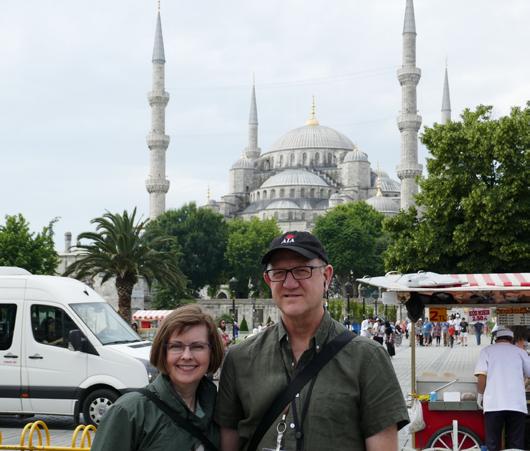
toll road plowing through the envisioned Trinity River Park consumed attention in 2014, combined efforts finally killing the road the next year and earning AIA Dallas an AIA National Grassroots Excellence Award for advocating for the profession in 2016.
SS: What do you see as some of the greatest challenges facing the profession of architecture now and in the near future?
LL: In addition to ongoing concerns about studio culture, perception of our value, and strengthening our impact, we should consider how our rapidly changing world affects our focus and mission. The potential decline of shared experiences could lead to a diminished vision for our collective future. We must also recognize that while artificial intelligence can serve as a helpful tool, it can also pose risks if misused. Action is needed to achieve desired outcomes. Furthermore, the scarcity of resources—such as food, healthcare, water, and energy—will likely shape the civic and cultural landscape we inhabit and practice in for the foreseeable future. Architects have a unique opportunity to address these challenges effectively.
SS: How can the College of Fellows contribute to managing these challenges?
LL: Our mission highlights obligations to our colleagues, the profession and society. We are a passionate group of high achievers that is more than the sum of its parts. Individually we can apply influence in shaping conversation while mentoring the next generation to take the field. We can collectively consider how to expand mentorship to less populated areas of the country by leveraging technology to complement in person experiences. We can amplify understanding through shared stories of how impactful the Latrobe prize is in advancing research and the important influence of component grants awarded by the College.
SS: What do you see as the College’s primary strengths? Obligations? Opportunities?
LL: Our mission is clear, how we achieve it depends on mentoring the next generation to sustain and expand our membership as the Institute membership grows; reflecting the diverse ways we do and will practice. I was honored to serve the Institute on the Jury of Fellows, chairing the Jury in 2024 seeing firsthand the incredible depth and breadth of talent in candidate’s portfolios and the impact that the Latrobe Prize, component grants and mentorship initiatives had on success. Telling stories of that impact more broadly is an opportunity we can continue to build on. Also, our regional representative network is stronger than ever and yet can continue to grow in impact through more visible state and local presence.
SS: What do you most hope to accomplish during your probable 4 years on the COF ExCom?
LL: Each Fellow has an amazing story of success that inspires others. We can and do tell the story of our collective success through AIA.org and the Quarterly publication. I would like to see additional support for our regional representatives and their networks in sharing the impact of our members and the Fellows Fund inspiring increasing support; with more we can do more to be of service to the profession and society.
SS: What are your hobbies outside of architecture?
LL: Hobbies? Reading and hanging out with family including two adorable grandchildren currently are top of the list. I like golf but I am truly terrible at it. I started running in my late 40’s and coached half marathon run-walk groups for a while until life and broken bones got in the way – now I try to go to the gym often enough to stay reasonably healthy. Lots of things are on the list to give a try or return to when retired.
SS: Where/when was your last real vacation? Where will be your next?
LL: My husband Bob and I were in Japan the last 2 weeks in October joining a tour with our daughter’s in-laws. Next up is a trip to Orlando to initiate the Grandkids into the Disney experience right after Christmas. Looking forward to traveling further afield again next year or so– perhaps Spain!

Photo Above: Lisa in Japan - October 2025.
Photo Above: Lisa and Bob in Istanbul - 2016.
Architecture Week Grants

By Devon Davis and Jessica O'Donnell, AIA
The American Institute of Architects is committed to inspiring K-12 students who will meet the future needs of an ever-evolving profession.
The Architecture Week grant program was created by AIA in 2024 to support state and local components, or their affiliated foundations, in their efforts to inspire K-12 students during Architecture Week. Starting early is the key, and Architecture Week is ideal timing to highlight the benefits of pursuing architecture as a viable career path.
Architecture Week serves to:
• Inspire youth to learn about the power of design.
• Nourish curiosity to engage in solving grand challenges with design.
• Connect students with architects and design professionals.
The funding criteria includes requirements that the grant be used for an activation with K-12 students that incorporates at least one of AIA’s two strategic goals.
With support from the College of Fellows, AIA was able to award $25,000 to eligible recipients in 2024, leading to a highly successful Architecture Week 2025 whereby: 51 chapters participated 505 members engaged 42 states represented 484 schools reached 20,616 students impacted 3.7millionsocialmediaimpressions 20 grants awarded to support local programming
Examples of chapter outreach efforts funded by this grant can be seen through a collage of photos on the follwoig pages to help inspire readers and future grant applications.
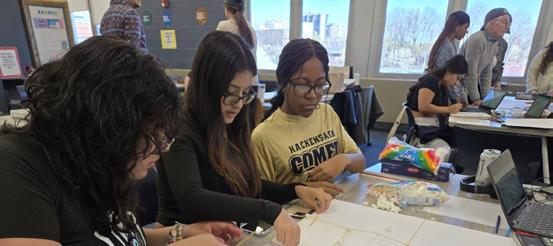


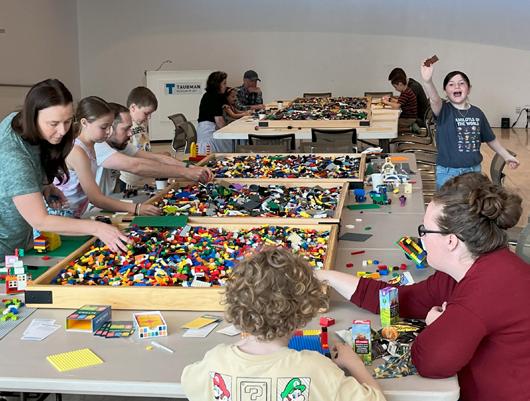


AIA Architects League of Northern New Jersey: Led a tower design challenge for local high school students
AIA Baltimore: Partnered with Baltimore Design School to host a panel of design professionals
AIA Blue Ridge: Hosted a family-friendly Kidstruction LEGO event
AIA Brazos: Simulated the urban development process through a 9-day student program
AIA Chattanooga: Showcased student projects and encouraged collaboratively building an interactive installation
Photo Courtesy of Creative Revolver.

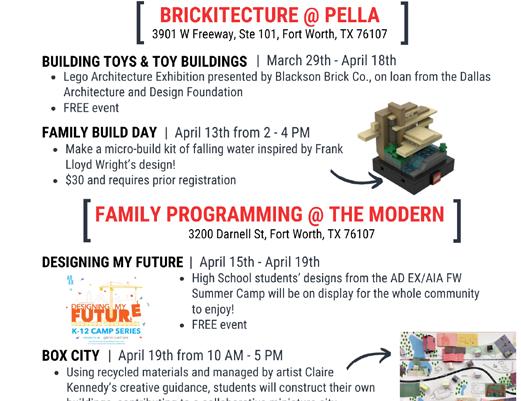
and
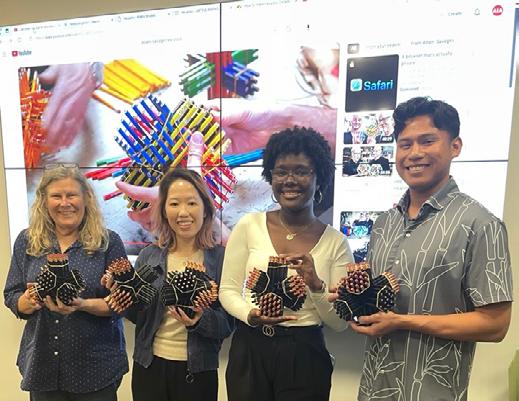
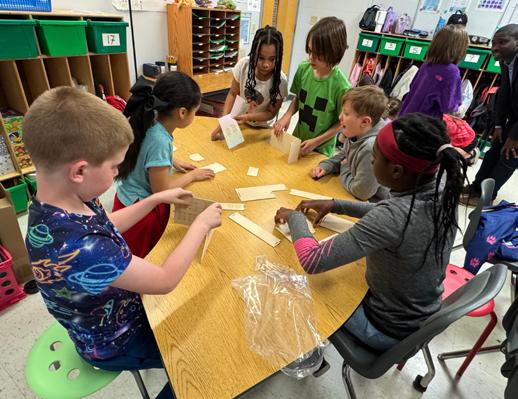
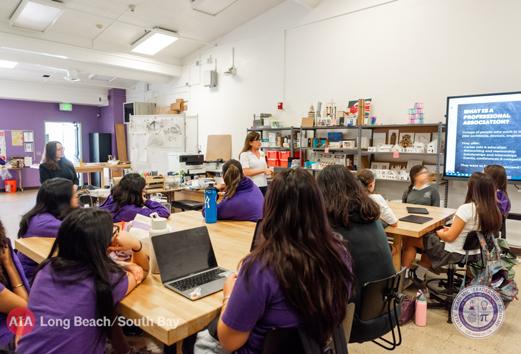
AIA Connecticut: Created immersive learning environments connecting students with practicing architects
AIA Fort Worth: Planned a full week of K-12 activities, including two exhibitions, architecture tours, films, Box City,
a LEGO build
AIA Honolulu: Engaged students in culturally rooted design challenges
AIA Kentucky: Delivered hands-on design experiences to students statewide. Photo courtesy of George Donkor.
AIA Long Beach: Hosted a panel of design professionals at the only all-girls public STEM school in California
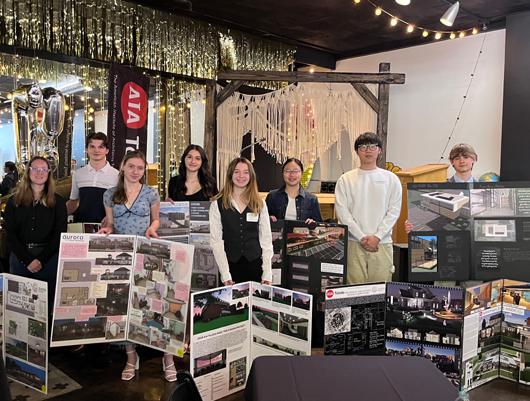

Additional Architecture Week Grant recipients include:
• AIA California: Published a student guide on becoming an architect
• AIA Kansas City: Organized a full “Explore Architecture Week!” with activities for all grade levels, both in schools and at the AIA Kansas City office
• AIA New Jersey: Hosted a virtual design competition inviting students to envision futuristic skyscrapers
• AIA New York Chapter: Partnered with OQ2D to offer a hands-on sustainable building workshop
• AIA Philadelphia: Integrated architecture into STEM curricula through educator partnerships
• AIA Richmond: Hosted a book drive, sending architecture and design books to local elementary and middle schools
• Boston Society for Architecture (BSA): Created KidsBuild! classroom workshops in collaboration with teachers
Thank you again to the College of Fellows for your generous contributions for the 2025 Architecture Week grants. We look forward to seeing new creative activities in 2026!
AIA Toledo: Celebrated the 75th anniversary of its annual High School Design Competition. Photo courtesy Nancy Odenweller
Washington Architectural Foundation: Hosted a sustainable greenhouses design challenge for local high school students
Feature | 2026 Chair of the COF Regional Representatives
Interview with Jon Penndorf, FAIA
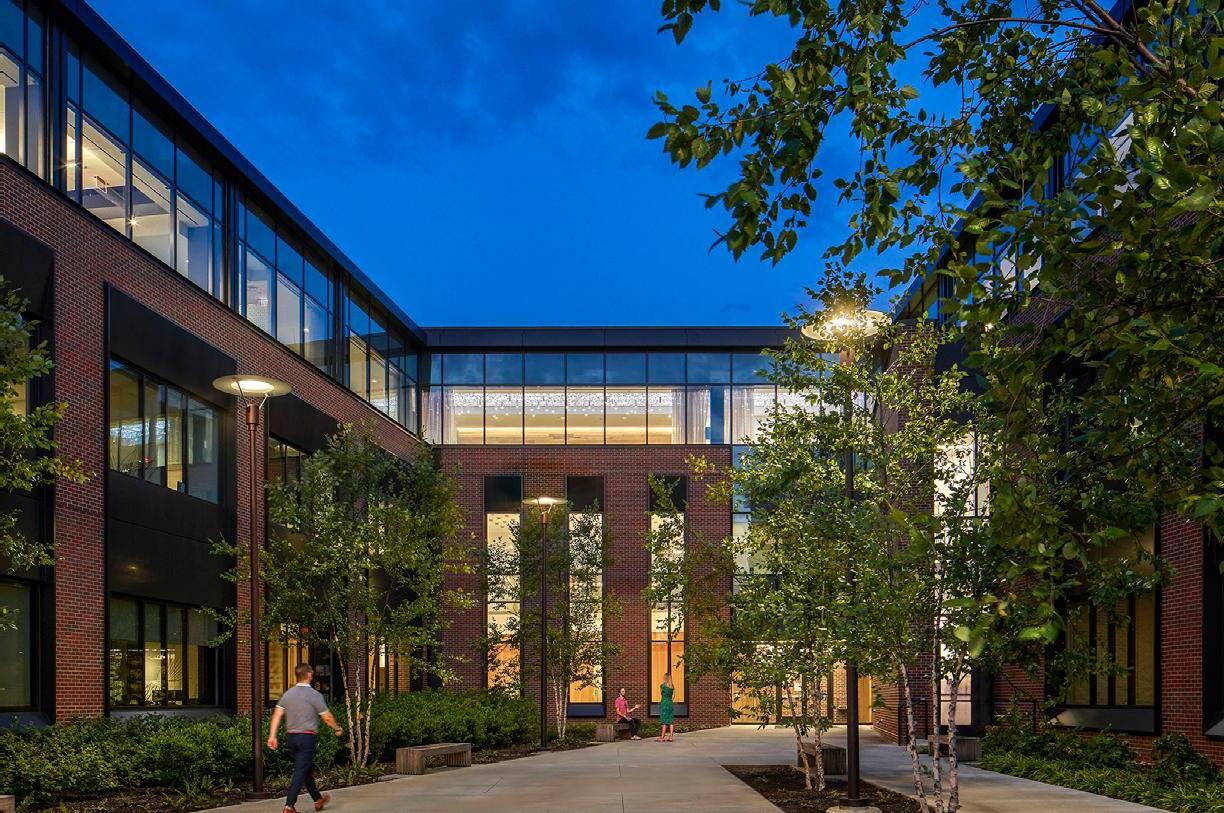
By Stuart Pettitt, FAIA

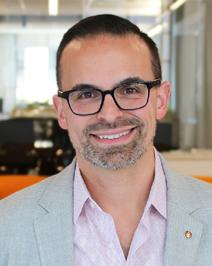
Stuart Pettitt, FAIA (above left) is the 2022-2025 Chair of the AIA College of Fellows Regional Representatives.
Jon Penndorf, FAIA (above right) is an Associate Principal in the Perkins&Will Washington DC office serving as Director of Regenerative Design, shaping sustainability approaches to projects across the office. He also serves on the firmwide Innovation Committee and co-directs the firm’s Resilience Task Force. Jon previously served as an Advisory Group member for the AIA Committee on the Environment, and on the Advisory Committee for the USGBC National Capital Region. He has served locally as President of AIA|DC, as regional representative to the AIA Strategic Council, and nationally chaired the AIA Young Architects Forum. He currently serves as the Middle Atlantic Regional Representative for the College of Fellows and as a member of the AIA|DC Fellows Public Programs Committee.
Photo Above: University of Virginia Old Ivy Road BuildingCharlottesville, VALEED-CS Gold. Photo by Halkin Mason Photography
Stuart Pettitt (SP): Congratulations on being selected as the 2026-2028 Chair of the AIA College of Fellows Regional Representative! What inspired you to pursue this position and what are you most looking forward to in this new role?
Jon Penndorf (JP): Serving as a Regional Representative for the Middle Atlantic Region, I’ve learned how important this position is for Fellows to stay connected, and I am hoping to further the work Stu has completed to create an even tighter network of Regional Reps in the coming years.
SP: You have a robust history of leadership within AIA, including national roles on the Young Architects Forum and the Strategic Council. Describe a memorable AIA experience that impacted on your trajectory as an Architect.
JP: Back when I was involved with Young Architects Forum leadership, we decide to focus on non-design soft skillsexperience architects need when moving into leadership and supervisory positions both in practice and the AIA. We produced a series of programs including the Mini-MBA for Architects as a pre-conference workshop at the annual AIA Conference on Architecture. This 4-hour session was like a speed round on business skills narrated by CEOs of architecture firms. Co-hosting this experience and being able to learn from these amazing leaders in a relaxed, candid forum was super impactful and something I have carried with me.


SP: What inspired your initial engagement in AIA?
JP: I have always been one to give back. When I first joined the AIA, I wanted to understand how it is more than just the letters after my name. I soon learned our local DC component was looking for leaders to work in the Board of Directors and I ran for the position to find out more about how the organization worked and how I could contribute positively. The network - and friends - I made solidified the importance of AIA in my professional development. I also learned at the time the chapter didn’t have much for emerging professionals outside of ARE prep classes, so I slowly started what continues now as the AIA DC Emerging Architects Committee to facilitate a way for EPs to find one another and share in the experience.
SP: What is your favorite part of being a volunteer leader with AIA?
JP: The people. It has to be the connections made with other architects from all over the country, and how we find commonalities beyond the baseline of “being an architect.” I also love it when a synergy develops among volunteers, and we can create something truly meaningful for members. Many of my closest friends are those who volunteered in AIA leadership with me, and those feel like friends for life.
Photo below: 1676 International Drive in McLean, Virginia was a repositioning of an existing office building. Now Fitwel 2-star certified, it included a reimagined entry. Photo by Halkin Mason Photography.
Photo Above: Jon, daughter Maggie, son Nate, and wife Julie. Family
SP: You are the 2025 recipient of the Washington DC District Architecture ‘Centennial Medal’ - what does that recognition mean to you?
JP: It is an amazing honor, and one that I was completely surprised to find out I am to receive since I was not involved in a nomination process! I follow a list of recipients who have made tremendous impacts on our local component, including my sponsor for Fellowship, David Daileda, FAIA, and feel humbled to be considered among them.
SP: What initiative are you most proud of and why? (could be an AIA, firm, design, personal, or other thing you are working on)?
JP: Personally, seeing my kids grow to become compassionate, kind, and thoughtful individuals feels like what I am most proud of. In the AIA, the AIA DC Emerging Architects Committee that I started over a decade ago feels like a legacy. I started it because I needed it just as much as others did. When I ended my leadership of the group I hoped it would be strong enough to continue and evolve. Now I come back as a guest “Fellow” to talk about mentorship and other topics, and I see such strong leadership and participation in each meeting. I am deeply proud the group continues to serve and be meaningful and relevant.
SP: You were elevated in 2017 under Object 3 - Led the Institute. What stands out to you from that application process and what advice do you have to others considering applying for Fellowship?
JP: The application process is a humbling experience. It really forced me to look inward about my values and goals and the “why” for all I worked on in terms of the common thread. It was challenging at times and there was a lot of selfdoubt, especially about where I was at the time in my career. But receiving the letter that January morning was absolutely exhilarating. Advice - do it but do it when you are ready to commit the time it really needs, and you identify the support network of friends and colleagues who can walk that journey with you.
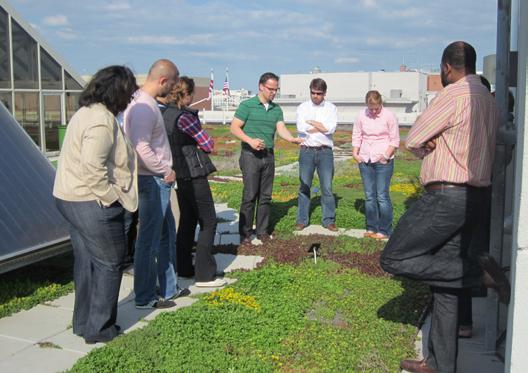
SP: What advice would you give to those who are looking for ways to engage with the College or AIA?
JP: First, take a moment to read the Quarterly and the website to understand all the things the College is already doing to see if there are needs for people to get involved. Second, reach out to your Regional Rep! It is an extremely friendly, kind group who all want to get more Fellows engaged regionally and locally. And third, donate to the Fellows Fund. The amount is less important than you taking the time to give and participate.
SP: What has been your greatest leadership challenge? How did you navigate your way through that?
JP: While I am direct in conversation (I am a New Yorker by birth, after all), I am not confrontational. Having difficult conversations as a leader was not something I was looking forward to and frankly would try to avoid at first. These might be with a colleague or a client. I have learned that difficult conversations do not age well, though (it is not wine or cheese), and approaching them with honesty, empathy, and responsive listening make them less about “confrontation” and more about forward-looking feedback.
SP: As an advocate for climate adaptation and resilience, describe ways you have used architecture and design to promote both human and planetary health.
JP: I talk with every client about how good design decisions can support both human and planetary health, and how their buildings and spaces should be physical manifestations of the values they espouse. Whether a project is going for a certification like LEED or WELL or not, there are design strategies that can promote regeneration that can be incorporated into every project. I have also had the opportunity to apply design thinking and these values at larger scales, writing resilience plans for Washington DC and the National Institute of Health. These are longer-term projects but can potentially have a profound impact on a larger scale.
SP: Describe a project that you are most proud of and why.
JP: Perhaps the least typical project is one I am most proud of. Working on the Climate Ready DC plan for the District of Columbia was an amazingly rewarding experience. I got to participate in and author part of a document that would become a framework for resilience for the city in which I live. It was an opportunity to use design thinking at a major scale. Engaging with city departments, hearing other residents’ hopes, and developing actionable items that could mean real climate resilience for my chosen hometown was very meaningful.
SP: What type of project challenges do you face in your work and what type of responses have you developed?
JP: I often am the person who assists in translating a client’s sustainability goals into actionable design or policy strategies, and that comes with a few typical challenges. The first is truly understanding a client’s motivation – are they pursuing a benchmark because their organization simply
Photo Below: Jon leading a tour of the green roof atop the World Wildlife Building headquarters in Washington, DC.

sets the standard? Are they looking for innovation and being seen as a leader? Or is saving operational costs the primary driver? Collaborating with a client to understand what makes it a success in their eyes from a high-performance perspective is a significant first step in project design, and it can be fraught with challenges. I sometimes try to moderate my vocabulary with clients to ensure how we look at performance and regeneration resonates with them. Another challenge is sometimes knowing where additional gentle education of climate risk and design options can open the door for pushing a project’s performance further. I operate under the mantra “you can’t unknow this” after you learn about it. Sometimes planting the seed of an idea does not allow it to grow in the first project, but the next one might find its place to thrive.
SP: What is the most significant challenge facing the architectural profession?
JP: Our profession always finds a “big” challenge to grapple with, and we typically end up addressing it to keep us relevant. Big data is both a blessing and a curse. We can harness data to make more informed and impactful decisions. Clients also have access to an immense array of data points too though and having to review and adjust if it is not the right data can be time- and fee-consuming.
Architects have amazing skills for helping the built environment to turn around global warming and reduce operational and embodied carbon. We face challenges in moving that needle forward, which could be another 20 questions and answers, but regenerative design is achievable. We just need to ensure we present it as the right solution to clients, and material manufacturers can continue to make improvements in their processes.
SP: Outside of architecture, what do you do for fun?
JP: My daughter and son (ages 18 and 12) keep me pretty busy during the school year, but I enjoy traveling and exploring new places, being outdoors to hike and spot wildlife, and going to live theatre and baseball games. Several years ago, I started teaching myself mixology; I have enjoyed creating craft cocktails and have even taught several cocktail classes.
SP: If you were not an architect, what other career or vocation would you pursue and why?
JP: When I was looking at colleges I thought if architecture didn’t pan out, I’d be a teacher. I am now teaching part-time at the School of Architecture and Allied Arts at the Catholic University of America, so maybe that has now come true?
Photo Above: The AIA Strategic Council Class of 2018 formed strong bonds, and continue to be friends to this day.
Wasatach Connect
2024 COF Component Grant Recipient
AIA Utah
Funding from the College of Fellows grant allowed AIA Utah to support and create a mentorship program that engages K-college students, emerging professionals, professionals and fellows.
GRANT OBJECTIVES:
Objective 1: AIA Utah Task Force established to assess current collaborations and identify areas of need. Also, perform evaluation of program activities and partnerships. We did not hold a formal meeting in February to assess current collaborations but instead worked with individual partners to see how AIA Utah could best support their efforts and received feedback on areas that could be improved.
We specifically met with NOMA Utah, UCFA, YAF, our local AIAS at the University of Utah and our cohort of local fellows represented by Roger Jackson.
We have met with the above partners to assess 2024 activities and plan for 2025.
Objective 2: Wasatch Connect will create three new mentoring initiatives.
1. Lunch with Legends twice yearly event. We did this event in the spring with strong attendance. The fall event was
Help make programs like this possible by donating or honoring someone with a gift to the College of Fellows Fund today!

postponed to early 2025 due to scheduling conflicts with Fellows.
2. YAF Firesides with a Fellow-we had planned on hosting three of these but actually only hosted one. It was an enormous success and YAF plans to host this event annually. We did not do the other two because YAF wanted this up at campsite in the mountains and spring/ fall did not work due to weather.
3. AIA Utah annual conference will host a separate ½ day track or 2 workshops for emerging professionals. This was not accomplished due to venue accommodations and timing.
4. NOMA Utah partnership to host two Paths to Fellowship events with fellows from underrepresented backgrounds. In order to find a fellow from an underrepresented background, it was necessary to invite someone from out of the state. We decided to do one event together to maximize our resources and the impact. We invited Michael Willis to spend a evening discussing his journey to fellowship.
5. AIAS mentorship program was our biggest success. We partnered 22 students with 12 professionals as mentors. Their commitment is to meet 6 times between October and April, with AIA Utah hosting the mentor match and an April closing event.
6. Partnership with WIA SLC to host an architecture education event with Girl Scouts of Utah. This partnership did not happen due to timing.
7. Partnership with Utah Center for Architecture to revive the“Educating Elementary Children Through Architecture” program. This did not happen due to a lack of leadership in UCFA.
Objective 3: Continued support of successful programs and partnerships.
1. Pathway to Fellowship with Jeanne Jackson was held in the spring.
2. College of Fellows lunch was held in September to welcome any new fellows (none) and celebrate the careers of current fellows in Utah.
3. Sponsorship of NOMA Utah’s Project Pipeline.
USE OF FUNDS
Attached is a detailed accounting of how funds were spent. We spent $4,766 of the $8,000 grant. We received $6,000 in the spring and respectfully request that we be granted the remaining $2,000 so that we can use the full $3,234 remaining funds in 2025 to continue our mentorship initiatives. These are explained further under section 7 below.
PROGRAM ACTIVITIES
Activity 1: YAF Fireside with Fellows Completion Date: September 19, 2024
Results/Outcomes: Great event with 4 fellows attending and 25 YAF/EP’s. Informal gathering led to intimate conversations about the profession and career goals. YAF wants to make this an annual event and the fellows agreed.
Activity 2: Pathway to Fellowship with Jeanne Jackson Completion Date: March 2024
Results/Outcomes: Small event with 5 people in attendance. We forgot to let the committee know that lunch was provided so we’d like to offer it again with lunch in January 2025. Jeanne graciously does this event annually.
Activity 3: Lunch with Legenda
Completion Date: April 18, 2024
Results/Outcomes: Three fellows shared their professional and personal insights with 13 attendees. We think this should be an annual event, instead of biannual, to encourage greater attendance and hype.
Activity 4: College of Fellows luncheon
Completion Date: September 5, 2024
Results/Outcomes: This has become an annual event hosted by AIA Utah as a way to bring together and celebrate our local fellows. It is a popular event with about ½ to 2/3 of the fellows attending. It is also a chance to welcome a new fellow. This will remain an annual event. 14 fellows attended along with AIA Utah’s ED and President.
Activity 5: AIAS Mentorship Program
Completion Date: September 18, 2024
Results/Outcomes: This was a resounding success and helped the AIAS chapter increase membership from 3 to 22+. 12 professionals signed up as mentors and 22 students are mentees. AIA Utah hosted the mentor match and will host a closing event in April 2025. Mentors and mentees have to meet at least four additional times.
Activity 6: NOMA Utah/AIA
Utah Path to Fellowship
Completion Date: December 3, 2024
Results/Outcomes: NOMA and AIA Utah decided to make this into one event in order to bring in a fellow who could speak to the unique issues NOMA members face in the profession. It was well- attended and met an unmet need for our local architecture profession.
OUTCOMES AND IMPACT
The biggest impact this grant made was to jumpstart AIA Utah’s commitment to mentorship and to re-engaging with our local fellows. It allowed us to identify those programs that matter to members and future architects so that we saw an increase in engagement. It also strengthened the work our partners do in the community. We are proud of our collaborations with NOMA Utah, AIAS, YAF and our local fellows.
This grant directly impacted over 100 individuals and benefitted 6 groups. Key achievements are detailed above under activities but two events that stand out in terms of attendance and positive feedback are the YAF Fireside with Fellows and the AIAS Mentorship program.
Long-term goals are to continue the events we started this year and track key data point such as graduation rates and licensure for students along with engagement numbers for mentors and fellows.
CHALLENGES AND LESSONS LEARNED
The biggest lesson learned is that AIA Utah tried to achieve more than was possible. It was an ambitious plan to implement and not everything worked out nor were some of the ideas well received. We will scale back for the future and invest in those programs/activities that are well attended and supported.
FUTURE PLANS
As mentioned above, we do plan to continue some of the activities and programs. The AIA Utah Board approved the 2025 budget which includes continued funding for partner organizations along with monies for the AIAS mentorship program and activities with and for the fellows. We also asked our active committees to build on the lessons we learned and incorporate more multigenerational/professional opportunities in the work they do. For those who attended any of these events, there is definitely a renewed sense of purpose and commitment to mentorship.


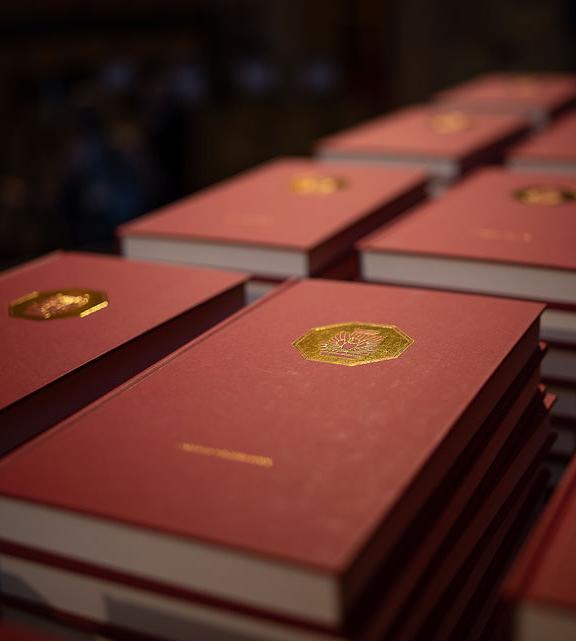
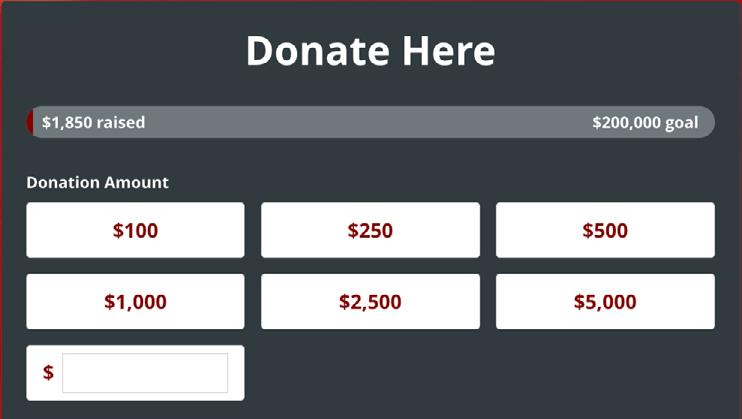
Remembering Former Chancellor Robert A. Odermatt, FAIA
By Ronald Arthur Altoon, FAIA
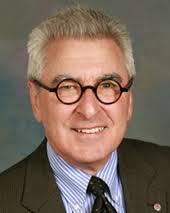
For as long as I knew him, Robert A. Odermatt, FAIA was a kind and nurturing man. Selfless beyond measure, Bob seemed to have lived his life in service to others. A skilled architect and urban designer, he built community everywhere he worked. He was a good friend and ever a true gentleman.
I was driving home from picking up a compliment of Armenian mezzes (hors d'oeuvres) when I received an incoming call from Kristi Odermatt. She called to inform me that her beloved father, Bob, had passed peacefully the day before with his wife Diana close by his side. One feels so empty when receiving such news. Both had taken falls at their assisted living retirement facility recently and seemed not quite the same since. Sadly, Diana passed away just a few weeks ago as well. It is a solemn blessing to be comforted knowing that they are now united in death as they were in life.
Alice and I tried to see Bob and Diana periodically since they relocated from the home he designed for their family in the Berkeley hills to a wonderful retirement facility in Sierra Madre. Kristi had shepherded them to lunch with us where Bob, though moving tentatively, was ever focused and interested in what was going on with AIA in each of our several conversations. He spoke admiringly of the professional accomplishments of his children, and proudly of the academic
progress of his grandchildren. His friends were friends for life. Every interaction was a gift, even the unexpected ones. Occasionally, I would receive a "butt" call from Bob, which created light-hearted exchanges on each occurrence. I often wondered if others received such unexpected bolts of humor, or if it was just me.
I had met Bob when we were both on the Board of Directors of the AIA California Council in the 1980's. He was an AIA Regional Director and Vice President, and me, I was just a scrub. We collaborated on a committee to resolve the prolonged schism between NCARB and the California Architects Board over the wisdom of a standardized licensing exam. NCARB wanted a single test for all jurisdictions (a one size fits all approach), while California and other states with uniquely critical structural impact forces and harsh weather circumstances felt exams responding to local conditions might be more reasonable. Seismic, permafrost, hurricane, and tornado forces suggested to us that something more geographically responsive would be a more responsible approach. His contextually thoughtful, considerate, and focused thinking was evident in our in-depth discussions. A reasonable settlement was reached to the betterment of all and the sacrifice to none.
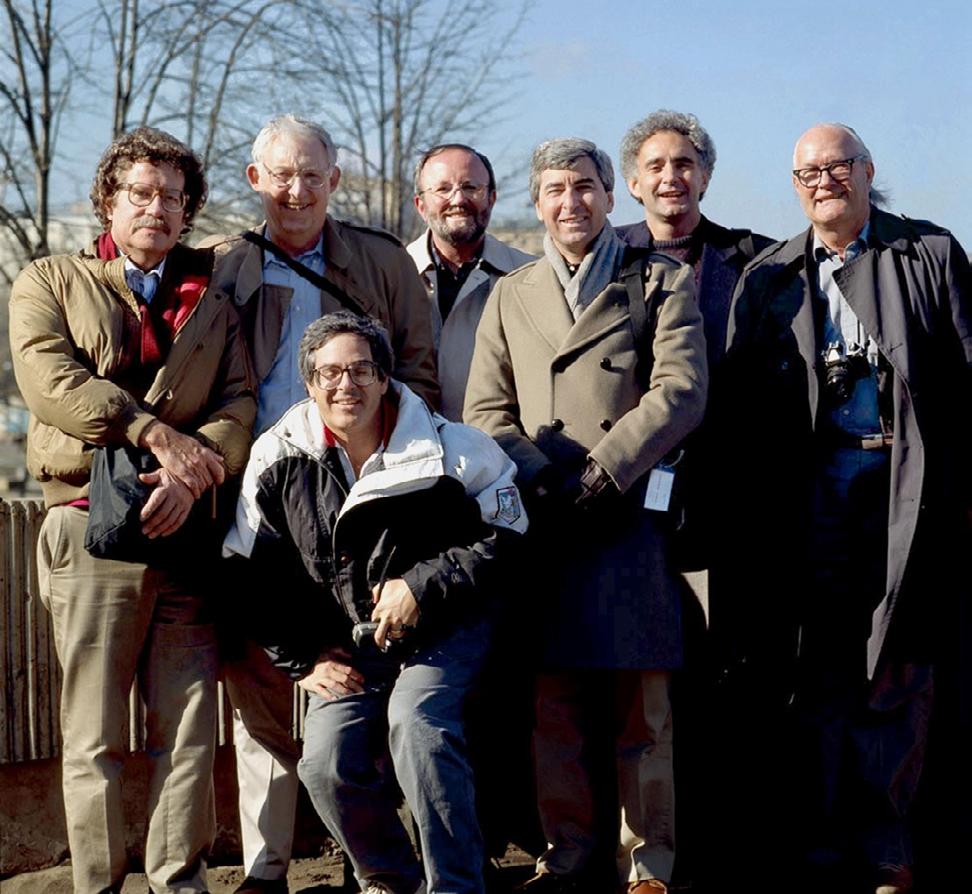
Shortly thereafter, following the December 7, 1988, 6.8 Richter Spitak Earthquake in Soviet Armenia, I reached out to Bob to enlist his participation in an AIA Urban Design Assistance Task Force, a humanitarian intervention to master plan reconstruction of the epicenter town. Bob did not waiver for a second. He accepted immediately and without reservation. He was all in. We were going to Armenia. Seven of us made this 2+ week trip, and while I organized and chaired the excursion, Bob was both our backbone and endless well of experiential wisdom. I came back emotionally spent but professionally transformed. Neither my practice nor personal life would ever be viewed through the same prisms again.
Bob lived to serve, a life value embedded firmly by this experience in many members of our team. Shortly thereafter, Bob became Chancellor of the AIA College of Fellows. Michael
Stanton, a member of the team, and I became future AIA Presidents. Jeffrey Heller, partner of a future President, Clark Manus, joined us as well.
There is a special kind of personal bond that forms when sharing days and nights of intense, emotion-filled, stressful collaboration, particularly when all tend to rely not on established norms, but on instincts and core human values to get through it all. Bob was an ever-present, ever-steady hand. This quiet man was our rock. I will always be grateful to have known him as a close and dear friend, and to have a bond forged in the kiln of such dire circumstances.
Six months later, Bob returned to Armenia with me to implement a technology transfer, this time with Syl Damianos, who then was in the catbird seat to become AIA President
Photo Above: AIA Armenian Earthquake Urban Design Task Force - Robert Odermatt, FAIA, Standing Center Left

a month later. It was on our outbound stopover in Moscow, when AIA international protocol suggested we meet with Juri Platonov, President of the Union of Architects of the USSR to debrief him of our activities, findings, and recommendations. When Bob posed the question to our host, “Mr. Platonov, what do you think about the Berlin Wall coming down last night?”, our host excused himself for 20-minutes. Upon returning to the meeting puzzled, he inquired how we knew this had occurred. He was a member of the Politburo of the Supreme Soviet and had not been informed. Bob, it seems, had a shortwave radio and we all were in his room listening to Voice of America. Bob was always prepared. This was just one of life’s memorable moments, and one I treasure having been able to share with Bob and Syl.
In 1991, my wife Alice and I were in Paris on our way to Armenia when CNN evening news ran continuous images of the horrific fires in the hills of Berkeley. I immediately called his firm, ROMA, to ask if Bob and Diana were safe. I was told they got out just in time, had saved family photos, but lost the house where they raised their children, Kyle and Kristi. On that trip, we had dinner in the 5th-floor walk-up apartment of the chief engineer of Armproject, the design institute which had accommodated our team during our two-week charette. It seemed ironic that our dinner host turned the conversation to inquiring about Bob as we were viewing images of the fire on his television, now receiving CNN news as well. That Bob had sacrificed his time and talent to aid people afflicted by a natural
disaster behind the Iron Curtain during the Cold War, only to himself be the victim of another natural disaster made for a poignant sobering moment for all of us.
Shortly after I divested from my firm at the end of 2014, Bob called to ask if I might be interested in replacing him working with a client of his in Hawaii. He felt at this point in his life he couldn't handle a heavy travel schedule necessary to properly service this job, and based on how we worked together in Armenia, and the way I had maneuvered in uncharted territory, he felt I was up to the task. It was a wonderful commission, and in nearly every meeting a client generated inquiry about Bob initiated our discussions. Bob just seemed to leave a positive aura of humanity wherever he went. Knowing that the referral came from Bob instilled in me an enhanced sense of responsibility to deliver at the level that he would have expected of himself. I imagined intuitively that Bob was watching over my shoulder, seemingly guiding me as I facilitated the design. I will be ever grateful for the expression of confidence he demonstrated in me by entrusting this valued client into my keeping.
We are all fortunate to have known this kind soul and are diminished by the reality of this loss we now must process. I am comforted by John 15:13, "Greater love hath no man than this, that a man lay down his life for his friends."
Rest well, Bob, you have been a good and faithful servant.
Photo Above: Bob and Diana with a client and close friend Laura Kodama in Honolulu
Chancellor's Cup Tournament Update
By RK Stewart, FAIA

As we trade our golf clubs for skis this winter, the College of fellows Golf Committee is gearing up for the 2026 Chancellor's Cup Tournament. We are excited that San Diego, the site of AIA26 in June, boasts several fantastic golf courses. We have been quietly checking out 9 courses based on recommendations from Golf Committee and AIA members. We are looking for courses with great reputations, a good challenge, and, ideally, some architectural heritage. Many of these courses are within a 40-minute drive of the San Diego Convention Center.
Some courses only accommodate tournaments if players stay at the resort. Others were unavailable on our desired date, Wednesday, June 10. The most requested course (hint: Torrey Pines) requires big sponsorships and famous players like Scottie and Rory! We narrowed it down to a fantastic shortlist. Late in October, the full Golf Committee met via Zoom to discuss course selection. We have chosen our preferred course and just started negotiations. No big reveals yet, stay tuned for our next Quarterly update! What we can say is the course was designed by Hall of Fame golfer Johnny Miller and features a stunning layout that blends with the native terrain. It measures about 6,400 yards, plays to a par of 72, and includes dramatic elevation changes, strategic bunkering, and a mix of open fairways and wooded areas. The clubhouse, designed by a renowned architect, offers expansive views and blends Mediterranean influences with contemporary design.
As we continue negotiations, the Committee will expand discussions with sponsors and promote the tournament. While the College organizes the tournament to raise funds for its
missions, it is open to all Institute members. Join us for a great day of fellowship and camaraderie on the golf course, all in support of the College's mission. Registration opens in February 2026.
Thanks for your interest in the College and our tournament. If you have other questions or suggestions, please contact Muza Conforti, the Executive Director of the College, at COF@aia.org.
Have a great holiday season! Looking forward to seeing you in the New Year. Until then, keep 'em in the fairway and out of the bunkers!
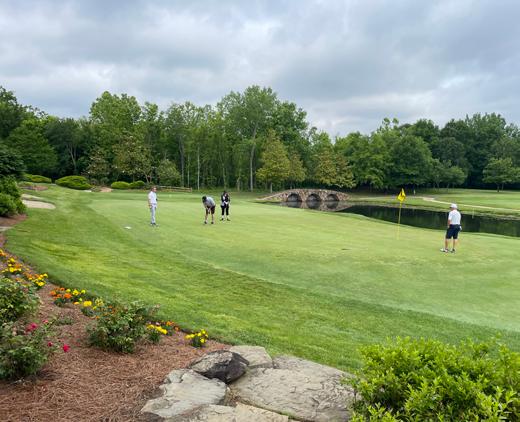
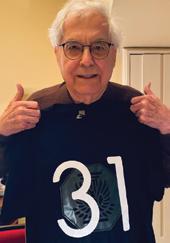
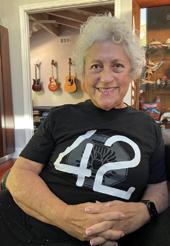


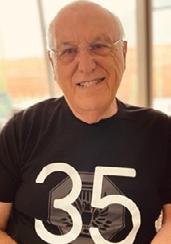
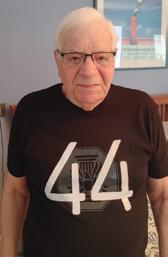

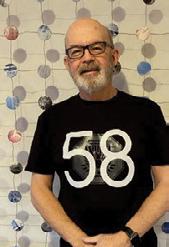
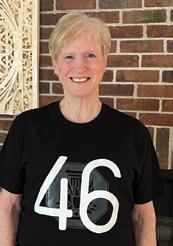
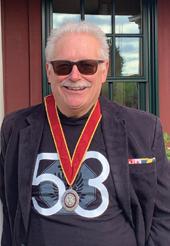
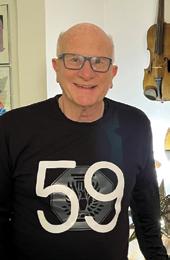





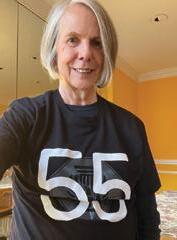
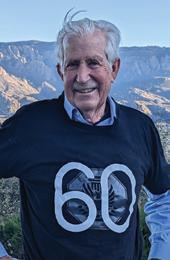
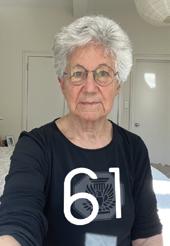
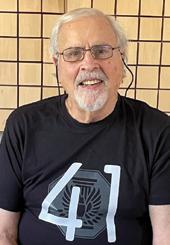
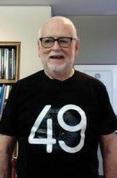
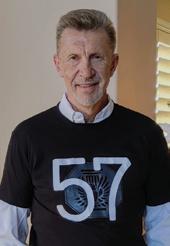

EDWARD J. KODET JR. FAIA
LENORE M. LUCEY FAIA
C. JAMES LAWLER FAIA
JOHN A. BUSBY FAIA
WILLIAM J. STANLEY III FAIA
TED P. PAPPAS FAIA
DONALD J. HACKL FAIA
JOHN R. SORRENTI FAIA
HAROLD ROTH FAIA
RONALD L. SKAGGS FAIA
EDWARD A. VANCE FAIA
BETSEY OLENICK DOUGHERTY FAIA
CAROLE J. OLSHAVSKY FAIA
ALBERT W. RUBELING JR. FAIA
CHESTER A. WIDOM FAIA
SYLVESTER DAMIANOS FAIA
ELLIS W. BULLOCK FAIA PETER
RONALD B. BLITCH FAIA ROGER
Regional Representative Message
By Stuart Pettitt, FAIA
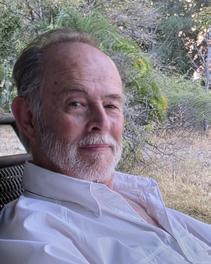
This year, the Regional Reps are leading the charge to encourage all Fellows to contribute to the College of Fellows Fund. Each of you should have been or will be contacted by your Regional Representative about investing in the Fellows Fund. The Regional Reps have already contributed for 2025, and they are asking you to do the same. All of us contribute to various causes and your support of the Fellows Fund allows the important missions of the College of Fellows to continue and flourish.
Typically, each year less than 10% of us contribute to the Fellows Fund. Think of what we could do and what an impact Fellows could have with 100% participation! How about it? Speaking of participation, we are always looking for volunteers as Regional Representatives to take the place of Regional Reps whose 3-year terms are expiring. One of the great benefits of being a Regional Representative is getting to know other Fellows better both around the country/world and in your own Region. If you would like to take part as a Regional Representative, now is the time to consider this opportunity. Please discuss this position with your current Regional Rep to discover how the Regional Reps are selected in your Region or contact Muza Conforti at AIA National.
For the upcoming three-year terms starting in 2026, Regional Rep openings are for the following Regions:
• California-2 positions
• New York-2 positions
• Texas
• The Virginias (VA, WV)
This is a wonderful opportunity for all Fellows, especially new Fellows, to get involved by volunteering. It is not overly time consuming and encourages whatever creative energy you have available. We hope to see lots of interest now and for future positions!
This will be your last message from me as the Chair of the Council of Regional Representatives. It has been a great privilege for me to serve for the past three years, and I would especially like to thank all the professional Regional Reps that I have gotten to know and work with. Jon Penndorf, FAIA (currently a Regional Rep from the Middle Atlantic Region) will be the new Chair and I am sure that he will do a super job.
Thanks all, it was fun!
Call For Proposals
AIA College of Fellows 2026 Component Grants
The 2026 AIA College of Fellows Component Grants will focus on Promoting Health and Well-being
Grants will be provided to AIA Components for programs that advance health, well-being, and help people thrive witin the AIA community and in the communities we serve. We welcome initiatives—new or expanded— that support mental, physical, or community wellness and benefit participants of all ages, from K–12 students to emerging professionals, mid-career architects, and those pursuing Fellowship.
Meaningful collaboration is encouraged. Partnerships with schools, community organizations, firms, and wellness-focused groups can broaden impact. AIA Fellows should play an active role in shaping, guiding, or mentoring each program.
Proposed programs should reflect the mission of the College and acknowledge the College in program materials and outcomes. Grants of up to $8,000 will be made directly to the proposing AIA component.
JURY
The Jury will be composed of members of the Executive Committee of the College of Fellows and the AIA Young Architects Forum Advisory Committee.
SELECTION CRITERIA
The jury will give specific attention to the following considerations:
Purpose: Does the proposal address the stated goals/ objectives of this program?
Key Participants: What is the experience and capacity of the leadership team?
Audience/Impact: Who will benefit from this program? How will the program be publicized?
Budget: Is the proposed budget realistic? Is there local support, e.g., quantifiable in-kind contributions, or direct funding from an AIA component or other sponsoring entity?
Component Relationship and Leadership: Does the proposed activity have the component support to accomplish the desired outcomes?
Value to the College of Fellows: The proposed activity must clearly demonstrate the mission of the College of Fellows and the profession.
SCHEUDLE
February 13, 2026
Deadline for receipt of completed applications/ proposals
March 5, 2026
Notification of Grant Awards sent to the respective, submitting AIA Components.
March 19, 2026
Deadline for written confirmation of Award Acceptance by the respective Component Recipients. 75% of total funding provided upon acceptance.
December 2, 2026
Due date for receipt of the Final report describing program activity and accomplishments. Photographs or graphics to be included as appropriate. Remaining 25% of funding provided upon receipt of the report.

https://aia.secure-platform.com/a/solicitations/454/home
Reflections on My First Year on the AIA Strategic Council
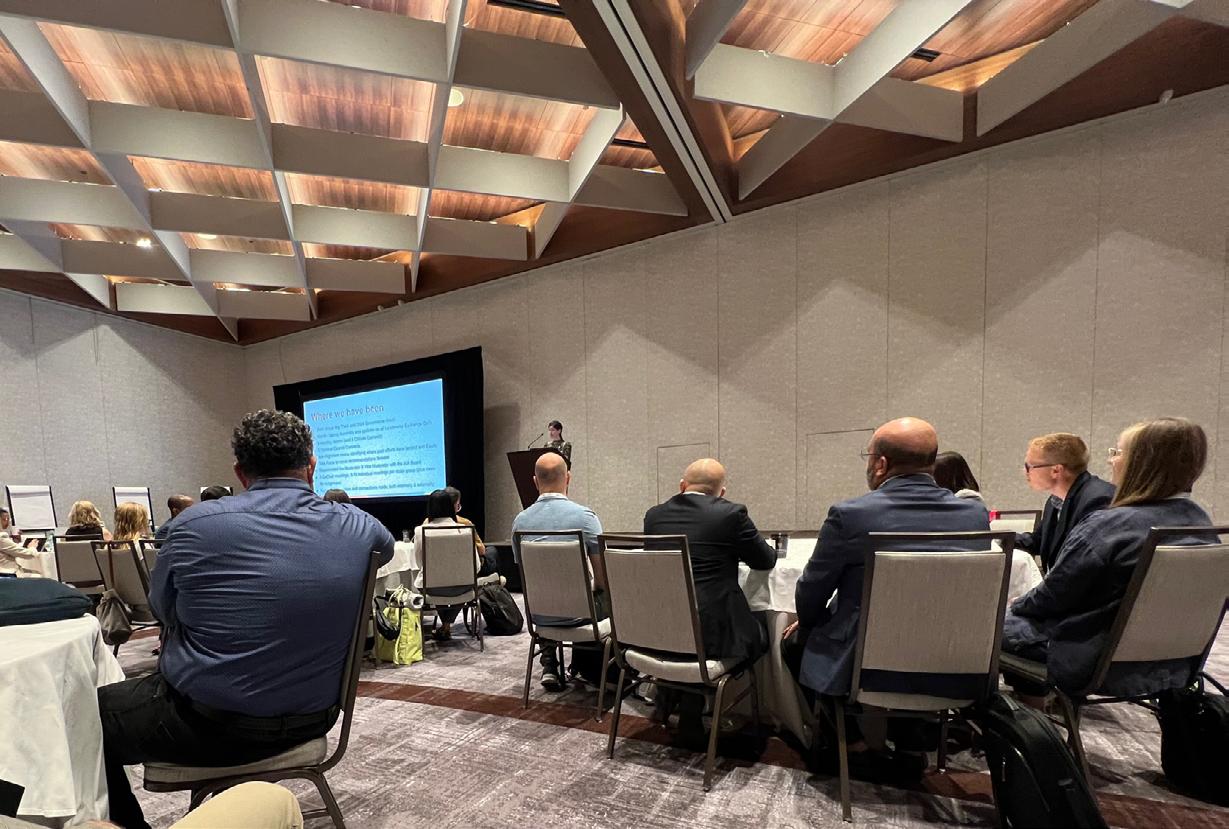
By
Thierry Paret, FAIA, NOMA, MRIAI, RIBA, LEED AP
As a relatively new member of the AIA Strategic Council, I’ve found the experience to be both enlightening and profoundly rewarding. I suppose my journey has been the reverse of most other councilors’ paths, given that I previously served on the National Board in 2016 and 2017 as a Director at Large during the transition to what was then the new, smaller board structure. This prior exposure provided a unique lens through which to approach my role on the Council, but it didn’t diminish the sense of novelty in navigating this particular forum.
My inaugural year has largely been about finding my bearings and building cohesion with my colleagues, particularly within the AIA of the Future Working Group. What has struck me most profoundly is the warmth and inclusivity extended by the more seasoned councilors. Their generosity in sharing insights has made the onboarding process far smoother than I anticipated. I must extend special thanks to the AIA of the Future Co-Chairs, Paolo Campos, AIA and Robert Easter, FAIA, who have been exemplary in guiding those of us who are uninitiated. Their mentorship has been invaluable in helping me integrate and contribute effectively.
On a broader Strategic Council level, Jessica O’Donnell, AIA has been instrumental in providing guidance on how to approach AIA International initiatives. Her expertise has enriched my understanding of how the organization’s global reach intersects with our domestic efforts, fostering a more holistic perspective on our strategic priorities.
In my current professional role as Vice President of the New York City School Construction Authority, where I lead the Architecture, Engineering & Design Management division, high-level strategy is a daily imperative. This mirrors some of my past positions, including serving as Design Advisor to the Government of Qatar, where I navigated complex, large-scale built environment challenges. I believe these experiences bring tangible value to the AIA Strategic Council, offering practical insights into policy, design innovation, and international collaboration that can inform our collective deliberations. I also hope that my many years as an expatriate, having lived and worked in Europe and the Middle East, combined with my return to New York, will bring a unique and valuable perspective to the Strategic Council’s discussions.
One of the aspects I relish most is the opportunity for innovative solutions that emerges from this exceptional group of AIA leaders. Our councilors hail from across the country, representing a wide array of market sectors and working for firms and organizations of vastly differing scales from boutique practices to major public entities. The diversity of perspectives and experiences is truly astonishing, and it continually reinforces in my mind the inherent strength of the AIA as an institution. It’s been brilliant to engage with such a cadre of talented, intelligent, and dedicated design professionals. I am convinced that our collective efforts will not only bolster the relevance of the AIA to its members but also elevate its stature in the eyes of the public, both domestically and internationally.
Looking ahead, I eagerly anticipate deeper engagement in the second year of my tenure on the Strategic Council. As we delve more profoundly into the key elements of the AIA’s future strategies, I’m optimistic that we’ll position the organization at the forefront of all matters pertaining to the practice of the built environment. This role has reaffirmed my passion for advancing our profession, and I’m grateful for the chance to contribute to shaping its trajectory.


Photo Above: 2025 AIA Strategic Council at AIA25.
Photo Above: Left to right - Thierry Paret, FAIA, Bill Bates, FAIA, and Winston Thorne, AIA.
Fellow Spotlight Series: Where does your medal live?
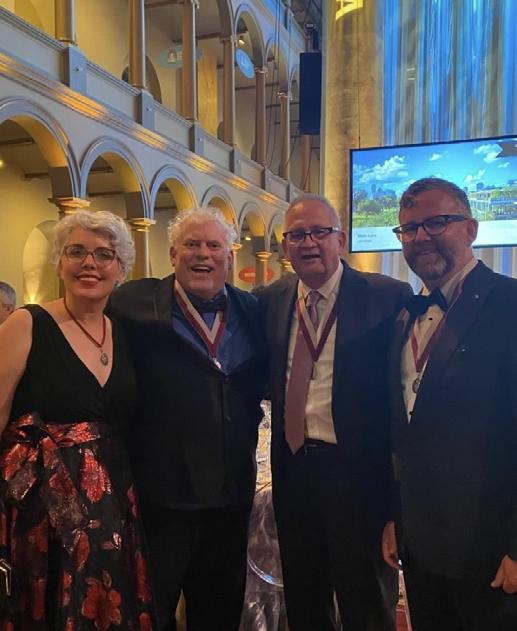

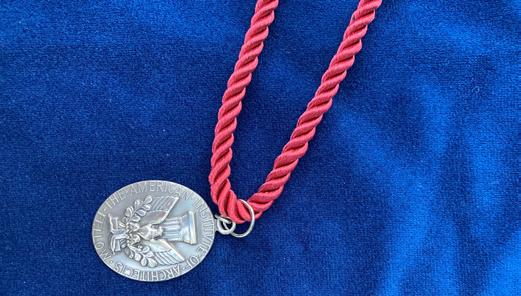
I was elevated in 2019 and one of the first things I noticed at that year’s Fellowship Gala was that many of the women were wearing their medals on a string of pearls or other type of necklace. To me, this was a really lovely way to wear it, and I resolved to do the same. It was much more practical than wearing it with the ceremonial ribbon that dangled awkwardly against my chest.
I searched for a long time for a suitable necklace and finally landed on a thick satin cord that is the same color as the ceremonial ribbon. I get compliments on it whenever I wear it, and because the cord is better sized to my body, I wear it more often (mostly to formal AIA events like design awards).
Attached is one photo from last year’s gala – me with three new Fellows, and a pic of me at a recent gathering of other Oklahoma Fellows.

Do you have a story to share about where your medal lives? Contact the College's Executive Director at COF@aia.org with your written description and photos for consideration in an upcoming spotlight!
Photos Above: Courtesy of Lisa Chronister, FAIA
Photo Above: Courtesy of AIA Central Oklahoma.
Photo Above Courtesy of Lisa Chronister, FAIA: From left to right: Rand Elliott FAIA, James Loftis FAIA, Hans Butzer FAIA, Jana Phillips FAIA, Ron Frantz FAIA, Lisa Chronister FAIA, Jason Holuby FAIA.
Photo Above Courtesy of Lisa Chronister, FAIA: From left to right: Lisa Chronister, FAIA, J. Todd Scott FAIA, Ron Frantz FAIA, and Drew Deering FAIA.
Daylighting Design for Circadian Health in Existing Buildings
Upjohn Research Drives Practical Innovation in Architecture
By Julia Siple, AIA, LEED
BD+C, WELL AP
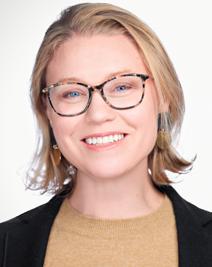
Julia Siple, AIA, LEED BD+C, WELL AP, is an architect and advocate for design that positively impacts people, ecosystems, and climate. As Quinn Evans’ director of sustainability, she leads efforts to empower teams and projects to achieve sustainable and high-performing outcomes. Previously, as a member of the AIA staff, she supported the development of key resources on energy, materials, and the AIA 2030 Commitment.
The AIA Upjohn Research Initiative plays an important role in advancing architectural practice. By supporting and publishing applied research, the program enables architects to pursue indepth study, collaborate with academic partners, and translate ideas into tools that directly inform design. It provides space for curiosity, encouraging firms like Quinn Evans to step beyond daily project work and explore questions that can elevate both practice and design impact.
At Quinn Evans, our experience with the Upjohn grant grew out of that same sense of curiosity and a series of well-timed conversations. As part of our culture of learning, we regularly invite practitioners outside the firm and beyond the field of architecture to share their work. One of those presentations featured Siobhan Rockcastle, director of the Baker Lighting Lab and co-director of the Institute for Health in the Built Environment at the University of Oregon. Dr. Rockcastle, a former professor of my colleague Denise Gravelle, AIA, LEED AP BD+C, spoke with our team about daylight design, health, and case study applications.
A lively discussion followed, revealing a gap in clear, accessible guidance for improving circadian health in existing buildings. The conversation sparked the idea for collaboration and ultimately, our Upjohn grant proposal. We wanted to identify strategies that could help designers and projects—especially those that might not be able to do a complex daylight modeling analysis—make meaningful improvements to the many spaces where people spend most of their time indoors. Partnering with Dr. Rockcastle and her team, we applied for an Upjohn grant to explore this challenge.
The resulting research culminated in a report and accompanying design guide that is publicly accessible on our website and forthcoming by the AIA. By sharing our work broadly, we hope to encourage other firms to build on our findings and continue expanding the role of research in creating healthy, sustainable environments. For us, the project reinforced how curiosity, collaboration, and on-going learning are central to innovation—and to the evolving practice of architecture.
The Problem
Circadian health—the alignment of our biological rhythms with the natural day-night cycle—is a growing area of research but not yet widely understood or easily applied within architectural practice. While designers recognize that access to daylight contributes to wellness, few have clear guidance on how to intentionally support circadian health through design— particularly in the context of existing buildings.
Green building rating systems such as LEED acknowledge daylight’s value, but their metrics primarily focus on visual comfort and energy performance rather than the timing, duration, and quality of light that most influence circadian rhythms. The WELL Building Standard begins to address this connection through its equivalent melanopic lux (EML) metric, but that measure focuses largely on electric lighting and remains challenging for many projects to model or apply. As a result, architects often lack straightforward, data-backed strategies for improving circadian health potential in real-world projects. This gap between emerging scientific understanding and accessible design guidance became the focus of our Upjohn research: to translate complex daylight science into practical, actionable strategies that designers can use every day.
Our Goal
We set out to develop data-backed strategies that improve a building’s potential to support circadian health. Furthermore, we wanted to provide guidance that works for both new construction and renovations—because renovations present the additional challenge of working within the constraints of an existing building envelope. Our aim was to find opportunities regardless of project scope or size to enhance daylight conditions that support health and wellbeing.
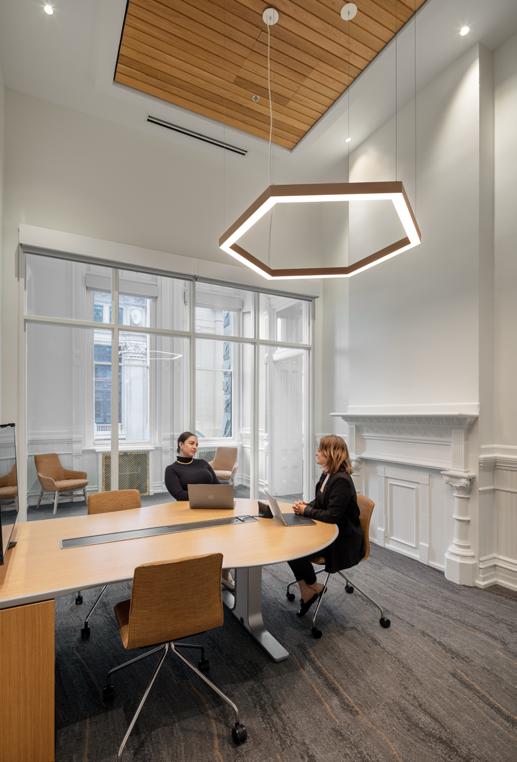

Photo Below: If daylight does not reach the vertical field-view, it will not increase circadian health.
Photo Above: Our research shows that even interior-only renovations can greatly increase circadian health potential.

Our Research
Our partners at the University of Oregon created digital simulations that compared the circadian health impacts of different design decisions. We helped set the parameters for the simulated space (a 30-by-40-foot office space with 16 desks and windows on one side), the design variables (including window-to-wall ratio [WWR], furniture orientation, and surface reflectance), and the range within variables based on our long experience working with existing buildings. The team then studied a variety of design changes one by one and quantified their potential effect on circadian health.
To show real-world applications, we also analyzed three projects from Quinn Evans’ portfolio. Our case studies quantify the circadian health potential of an elementary school, a government office building, and a commercial office tenant space before and after renovation.
Our Findings
In short, we found that buildings can meaningfully support circadian health by providing enough daylight at occupants’ eye level in the morning hours. To better measure this potential, our research partners proposed a novel metric: spatial melanopic daylight autonomy EML 150/275/50%. This metric expresses the percentage of workstation positions within the space where the occupant’s view position meets or exceeds 150 equivalent melanopic lux for at least 50% of the time between 9:00am and 1:00pm over the course of a year.

As expected, increasing the WWR had a big impact. But we were surprised by how effective simpler, more accessible strategies could be. Optimizing furniture layouts and programming in a way that would encourage occupants to spend a portion of time in better-lit spaces both produced notable benefits. Similarly, using light-colored and reflective finishes on walls, ceilings, and floors increased a space’s circadian health potential nearly as much as increasing window size.
What’s Next?
We learned a great deal from our research partners at the University of Oregon—and not just about daylighting for circadian health. The collaboration underscored the value of pairing rigorous academic research with applied professional experience. While our partners brought sophisticated analytical tools and methods, we contributed real-world case studies and helped translate findings into actionable guidance for designers working on everyday projects.
This experience has encouraged us to keep asking questions, testing ideas, and sharing what we learn. We see research not as a separate endeavor, but as a natural extension of practice—one that helps architects continually refine how we design for people, health, and the planet.
Image above: An axonometric diagram and rendering of our shoe-box model with baseline conditions.
Image above: This scatter plot illustrates the relative complexity and potential circadian health impacts of the design variables we studied.
Call For Proposals
2026 Leslie N. Boney Jr. Spirit of Fellowship Award
The College of Fellows Executive Committee is soliciting candidates for the Leslie N. Boney Jr. Spirit of Fellowship Award. Nomination of interested members should include:
• A one-page nomination letter with bullets outlining qualifications;
• May be self-nominated or nominated by others;
• Include three letters of support;
• All information shall be submitted in a single pdf
The Jury is composed of a former Chancellor of the AIA College of Fellows, who serves as Chair, the sitting Chair of the COF Regional Representatives, and one of the most recent recipients of the Boney Award. The Jury will review the qualifications of all candidates and recommend a nominee to the Executive Committee. The recipient will be awarded at the AIA26 Investiture Ceremony.
FORMER RECIPIENTS
2000 Leslie N. Boney Jr., FAIA, Wilmington, NC
2001 Ernest H. Hara, FAIA, Honolulu, HI
2002 Raymond P. Rhinehart, Hon. AIA, Washington, DC
2003 L. Jane Hastings, FAIA & Norman Johnston, FAIA, Seattle, WA
2004 Norman L. Koonce, FAIA, Washington, DC
2005 Paul Barkley, FAIA, Falls Church, VA
2006 Robert A. Odermatt, FAIA, Berkeley, CA
2007 Albert W. Rubeling, FAIA, Baltimore, MD
2008 Eugene J. Mackey, III, FAIA, St. Louis, MO
2009 Pauline Porter, Alexandria, VA
2010 Robin Lee, Hon. AIA, Washington, DC
2011 Paul Welch, Hon., AIA, Sacramento, CA
2012 Gretchen Penney, AIA, Charleston, SC
2013 Robert I. Selby, FAIA, Champaign, IL
2014 Harold L. Adams, FAIA, Baltimore, MD
2015 James D. Tittle, FAIA, Abilene, TX
2016 Terri Stewart, Hon. AIA, Arlington, VA
2017 Frank E. Lucas, FAIA, Charleston, SC
2018 Barry Johns, FRAIC, FAIA, Edmonton, AB Canada
2019 Rebecca Edmunds, AIA, Roanoke, VA
2020 John R. Sorrenti, FAIA, New York, NY
2021 Edward J. Kodet, FAIA, Minneapolis, MN
2022 Edward A. Vance, FAIA, Las Vegas, NV
2025 Lisa W. Lamkin, FAIA, Dallas, TX
HISTORY
In 2000, then Chancellor of the College of Fellows, Robert A. Odermatt, FAIA, presented the first Spirit of Fellowship award to Leslie N. Boney Jr., FAIA, for his outstanding service and commitment to the College. Later that same year, the Executive Committee (ExCom) of the College voted to name the award after the first recipient, and thus it became known as the Leslie N. Boney Spirit of Fellowship Award.
PUROPSE
The award recognizes continuous, exceptional service and dedication to the College.
APPLICATIONS DUE APRIL 17, 2026 at 5:00pm ET
SUBMIT HERE
https://aia.secure-platform.com/a/solicitations/453/home
Questions should be referred to the attention of Muza Conforti muzaconforti@aia.org
The Impact of Global Trends on Future Practice
Previously published in the 2025 Q3 edition of YAF Connection
By Cristan Oncescu,AIA
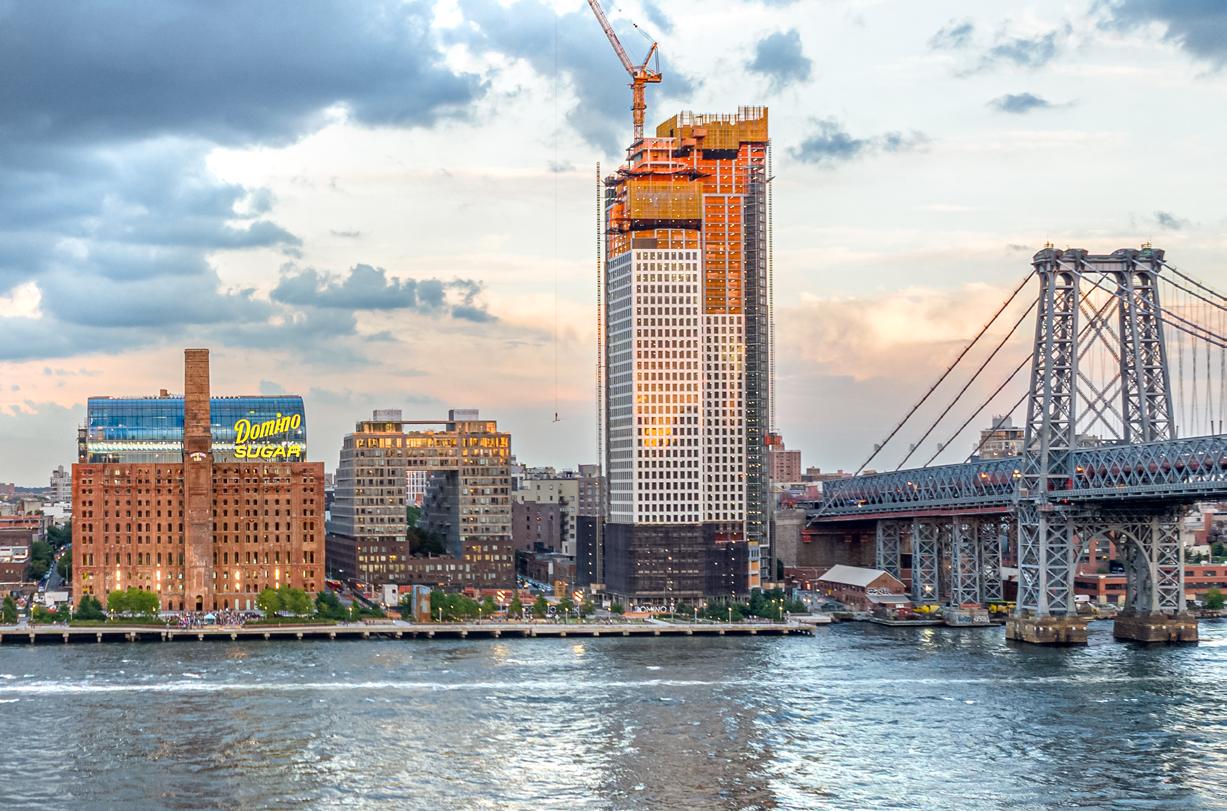

Cristian Oncescu, AIA, is an Associate and Project Architect at Newman Architects in New Haven, CT. Oncescu is also an Instructor of the Yale School of Architecture’s professional Practice course.
Introduction
In 2024, the Royal Institute of British Architects (RIBA) published the Horizons 2034 Report, identifying four significant forces that will drive global change over the next 10 years: the Environmental Challenge, the Economics of the Built Environment, Population Change, and Technological Innovation.1 Each of the four themes was divided into four topics. Subject matter experts undertook horizon scans of the sixteen topics to evaluate the current state of the world and project how each issue will evolve as a driving force over the next decade. Together, they painted a picture of the complex challenges facing the global architectural profession: designing
a resilient and just built environment for a growing and aging population amid a climate emergency.
The research, analysis, and observations in this article are part of a report commissioned by RIBA to connect the Horizons 2034 Report to the ongoing Future Business of Architecture program, a research effort aiming to help firms recognize long-term business opportunities and challenges. 2 The report “The Impact of Global Trends on Tomorrow's Practice: The Horizons 2034/Future Business of Architecture Review,” is published on the RIBA website
The Horizons 2034 Themes Horizon scans and strategic plans undertaken by organizations like the American Institute of Architects (AIA) and RIBA offer moments of reflection to help us prepare for the future. Within the context of the aforementioned RIBA programs and their 10-year outlooks, the research report focuses on two basic questions:
• How do the four grand themes steer the future of the architectural profession?
• How can architects shape or adapt to these forces over the next decade?
This report responds to the first question by painting two possible global futures, based on an analysis of the four Horizons 2034 themes and their projections, the data they are based on, t and new independent research. These possible paths are excerpted in the next section. The second question warrants a more expansive yet detailed answer and is explored in the full RIBA report. For the purposes of this discussion, the themes can be summarized in the following way:
• The Environmental Challenge underscores the need for architects and built environment professionals to prioritize carbon mitigation, climate adaptation, and biodiversity protection in building and urban design.
• The Economics of the Built Environment reveal how global finance and market forces accelerate urbanization. Architects must understand the commoditization of real estate as financial assets and the implications of urban density in order to create sustainable, just, and egalitarian solutions for cities in developed and emerging economies.
• Population Change, encompassing the growth, contraction, and migration of people, constantly reshapes communities globally. Architects and design professionals must address the varying effects of aging populations, international migration, and ethnic diversification at multiple scales.
• Technological Innovation highlights the ways in which the global architecture, engineering, and construction (AEC) industry can adopt new design and construction methods driven by leveraging data, increasingly sophisticated tools and workflows powered by artificial intelligence (AI) and machine learning (ML), and the automation and industrialization of construction.

The 2025 Los Angeles wildfires rank among California’s most destructive fires caused by the convergence of record wet and dry conditions, extreme winds, and dense building patterns. Photo: Yang Lu/iStock.

Guideposts to Possible Futures
The authors of the Horizons 2034 Report make a plethora of evidence-based projections across their essays, but the relationships between them vary. Some reinforce one another to effect greater change while others create tensions or are mutually exclusive. Further analysis was undertaken, qualified through new data, research, and global developments through the first half of 2025.
While the future is always hard to predict, we can build up evidence-based, interpretive, and somewhat speculative scenarios to serve as guideposts for the future. These can help architects in identifying signs of progress (or lack thereof). The aspirational Ideal Scenario and grounded Pragmatic Scenario lay out the opportunities and challenges facing the AEC industry to help make better decisions on the road to 2035.
• The Ideal Scenario materializes over the next decade if many things go right in the world, without relying on any silver bullet solutions. Great opportunities lie ahead, but the pathway to success is narrow given the competing challenges in the Global North and South.
• The Pragmatic Scenario is a plausible trajectory if less rosy current reports, computer model projections, and regulatory and practical challenges come to pass.
The Ideal Scenario
The year is 2035. Globalization has reached new highs as increased trade, capital, information, and people flows across borders. The value of global construction work has grown by 40% over the preceding 10 years, with China, the US, and India responsible for half of all work.3 Sub-Saharan Africa and emerging Asia compete for the title of ‘fastest growing global
construction market.’ In western Europe, the UK is the fastest growing construction market.4
In the Global North, projects at all scales have benefitted from energy-performance-based design approaches, low-carbon energy technologies, and increased circularity for carbon mitigation. New low-carbon materials have come to market, though many projects continue to utilize high-carbon steel and concrete.
New national legislation has stimulated more adaptive reuse and renovation of existing building stocks, particularly housing. Urban environments have benefitted from less demolition and less new construction, resulting in healthier homes, greater biodiversity, and mixed-income neighborhoods with access to better infrastructure and transport.
Financialization is still the primary force shaping cities, but new public policies in many countries and international investor pressure have incentivized different behaviors. The prerequisite for developers sourcing real estate investment in 2035 is actionable progress on complete decarbonization of portfolio assets.
In 2035, Africa’s population has increased by 400 million people to 1.8 billion, as predicted, and the increased urbanization has turned sub-Saharan Africa into one of the fastest growing markets.5 Delivering sustainable urbanization at a rapid pace is an ongoing project, enabled by a large, local, working-age population, imported professional expertise, and affordable solar technology and battery storage.
Practice for Architecture and Urbanism (PAU) inserted a new curtainwall office building inside of an existing masonry shell at The Refinery at Domino, conserving embodied energy and Brooklyn history at the same time. Photo: Max Touhey.
Architects from the Global North are collaborating with Global South professionals to work for local clients on developing sustainable projects that improve resilience, reduce poverty, and respond directly to the needs of local communities. Firms are taking on advisory services with governments to create modern building and energy codes and pass better built environment policies. Architects, engineers, and professional organizations are partnering with universities to educate new design professionals and upskill local labor forces.
Cutting-edge technology, powered by the AI revolution, is accelerating design and construction productivity in the Global North, and its use has become part of the professional standard of care. Years ago, large AEC software companies began pooling resources and drawing on new cross-industry data trusts, resulting in greater information-sharing and collaboration across the industry.6
Multimodal AEC AI/ML tools are trained on large amounts of curated AEC data, with functionality for end-users to incorporate firm-specific data. The design process is informed at every step by AI tools and AI agents that can compare a firm’s current design metrics with performance data from similar building projects, check code and program requirements, and automate cost estimating and supply chain analysis. Architects work more closely with builders within a combined data-driven ecosystem of building (and building component) performance.
To meet the construction demand anticipated for 2035 and beyond, the global construction industry has adopted new technologies and practices to increase productivity by 1% annually. Migration of skilled workers from the Global South has narrowed the skilled labor gap in the Global North. In the most developed nations, rather than focusing on innovations that only increase control of process and risk, the construction industry has adopted technology to improve workforce productivity at scale, such as industrialized prefabrication, supply chain marketplaces, and AI tools.7
The Pragmatic Scenario
Over the previous 10 years, global policymakers continued to incentivize renewable energy development and adoption in line with 2025 projections. As a result, global greenhouse gas (GHG) emissions peaked in the mid-2020s, then started a consistent decline as renewables overtook fossil fuels.8 However, the rapid population and economic growth in the Global South and a tenfold increase in global demand for data centers have meant that reductions are not even close to netzero targets and a global temperature rise of 2.6°C by 2100 is anticipated.9
The passage of new legislation incentivizing adaptive reuse has been slow across the Global North, and, where passed, building owners continue to seek exemptions from compliance. There has been a modest increase in the number of adaptive
Data centers for web services and artificial intelligence are built strategically in locations with cheap land, reliable power and digital infrastructures, and available water for cooling. Photo: Nisangha/iStock.

reuse and renovation/retrofit projects to improve energy efficiency and reduce GHG emissions, but city neighborhoods face other challenges. Newly constructed housing neighborhoods attract wealthy homeowners while displacing local communities, driven by real estate financialization and accompanying gentrification.
In developed countries, energy performance-based design approaches and low-carbon energy technologies are only implemented in well-funded projects, as policymakers offer little or no new financial support to bring hydrogen, carbon capture, and clean fuels to the mass market.10 Most construction projects are still built using steel and concrete, and minimal progress has been made towards decarbonizing the production process by 2050.11
Africa’s population has reached 1.8 billion, and the increased urbanization has turned sub-Saharan Africa into one of the fastest growing markets. India has over 1.6 billion people and is the third largest construction market.12,13 While the working-age population in India 14 and in African countries such as Kenya and Nigeria continues to grow, economic growth is limited due to low labor force participation and reduced access to education. The plentiful young labor force has not left to fill the skilled worker gap of the Global North construction industry. AEC software companies have invested in developing AI/ ML tools, but AEC industry-wide information-sharing and collaboration through data trusts has not come to pass. The preceding decade saw the peak and bust of the AI hype cycle, followed by an assessment of which AI firms have produced fitfor-purpose tools.15 The resulting AEC AI tools are not holistic building simulation and analysis co-pilots, but have a deep, narrow focus and excel at discrete, automatable tasks.
The construction site of 2035 is in many ways like that of 2025, but more digitized. Sensors, scanners, and robots are integrated into day-to-day operations, tracking and moving building components into place, some of which are prefabricated offsite. Despite some AI tools being widely adopted, the global construction industry has not seen meaningful productivity growth, and, coupled with skilled labor shortages, construction supply in the developed world falls short of high demand by trillions of dollars.
Conclusion
The purpose of forecasting programs is to provoke thoughtful discussion rather than lay out certainties, ultimately providing a long-term view that allows architecture firms to make informed decisions about their practice, work, and staffing. Each scenario comes with significant implications for the practice composition and skills, business models, clients, and markets that will affect US and global architecture firms. (These are explored in greater detail in the full RIBA report.)
In both scenarios, significantly increased construction demand due to global population growth is expected, as is aging and ethnic diversification in the world. The differences between the scenarios arise from our ability to meet the moment and respond to multiple demands at the same time in the coming decade and beyond. The adaptation and innovation of the AEC industry over the next decade will be driven by individual firms’ analyses and approaches as they respond to the global forces already in motion. Today, careful thought and strategic planning will help the architectural profession play an active role in shaping a more ideal future.
References
• FOOTNOTE #1: Royal Institute of British Architects, Horizons 2034 Report, London, Royal Institute of British Architects, 2024.
• FOOTNOTE #2: Royal Institute of British Architects, Future Business of Architecture, London, Royal Institute of British Architects, 2025.
• FOOTNOTE #3: N. Fearnley, R. Graham, and J. Leonard, Global Construction Futures: A Global Forecast for the Construction Industry to 2037, London, Oxford Economics Limited, 16 March 2023, p. 12.
• FOOTNOTE #4: Fearnley et al., Global Construction Futures, p. 23.
• FOOTNOTE #5: World Green Building Council and Africa Regional Network, Africa Manifesto for Sustainable Cities and The Built Environment, London, World Green Building Council, 2022, p. 7.
• FOOTNOTE #6: P. Bernstein, Machine Learning: Architecture in the Age of Artificial Intelligence, London, RIBA Publishing, 2022, pp. 130–135.
• FOOTNOTE #7: J. Mischke et al., Delivering on Construction Productivity is No Longer Optional, New York, McKinsey & Company, August 2024, pp. 9–11.
• FOOTNOTE #8: D. Hostert, BloombergNEF New Energy Outlook 2025 Executive Summary, New York, Bloomberg Finance LP, 15 April 2025, p. 7.
• FOOTNOTE #9: Ibid., p. 8.
• FOOTNOTE #10: Hostert, New Energy Outlook, p. 4.
• FOOTNOTE #11: Ibid., p. 5.
• FOOTNOTE #12: United Nations, Department of Economic and Social Affairs, Population Division, World Population Prospects 2024: India Total Population, 2024.
• FOOTNOTE #13: Fearnley et al., Global Construction Futures, p. 21.
• FOOTNOTE #14: N. Fearnley, Key Global Construction Themes 2025, London, Oxford Economics Limited, 9 January 2025, p. 3.
• FOOTNOTE #15: A. Jaffri, 'Explore beyond GenAI on the 2024 Hype Cycle for Artificial Intelligence', Gartner, 11 November 2024.
Announcement | AIA Young Architects Forum
2026 AIA YAF Advisory Committee
TheAIAYoungArchitectsForumenters2026withthemissionArchitectsinAction:CatalyzingforChange. TheForumcontinuestochampionandamplifytheimpactofnewlylicensedarchitectsthroughthreekey priorities,navigatingcareerevolution,shapingthefutureoftheprofession,andcultivatingwell-being. Together,thesefocusareasempoweryoungarchitectstoleadwithpurpose,createmeaningfulchange,and strengthenthearchitecturalcommunity.


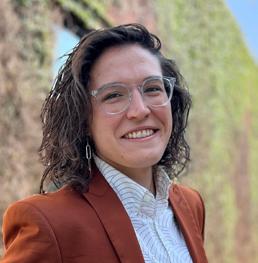
2026 Chair
Kiara Gilmore, AIA | Fayetteville, AR
Kiara an Associate at Modus Studio and Director of Emerging Professionals, she champions mentorship, professional growth, and leadership initiatives across local, state, and national levels. Passionate about high-impact design and community engagement, Kiara has led award-winning projects, created development toolkits, and advocates for young architects through AIA, ULI, and industry partnerships.
2026 Vice Chair, 2027 Chair
Anastasia Markiw, AIA, ACHA, LEED GA, NCARB | Pittsburgh, PA
As a Project Manager and Architect at DesignGroup in Pittsburgh, PA, Anastasia specializes in healthcare architecture, designing spaces that inspire people to work, live, learn, and heal. She recently concluded a two-year term as Advocacy Director for the AIA National Young Architect Forum, where she led a team focused on creating advocacy content and elevating underrepresented cultures and voices. Committed to advancing equity in the profession, she currently serves on both the AIA Pennsylvania Board and its EDI Committee. Anastasia also actively promotes the profession by mentoring aspiring students and speaking at local schools throughout the community.
2025 Past Chair
Sarah Woynicz, AIA | Dallas, TX
Sarah (she/her) seeks to bring the impact of visibility through storytelling and connecting in community and spaces to belong to both her practice and the profession of architecture and design. Sarah works as a Project Architect and Medical Office Buidling Suite Leader with HKS in Dallas. Her primary focus is within commercial/healthcare markets and in bringing teams together through inclusive and collaborative processes. She founded Pride by Design in 2022, bringing visibility through storytelling to the experiences of LGBTQIA+ individuals in architecture and design. In 2023, Sarah was one of 24 co-authors and editors instrumental in the publication of 'Out in Architecture' – the first ever collection of stories, essays, and reflections shared by LGBTQIA+ architects and designers.

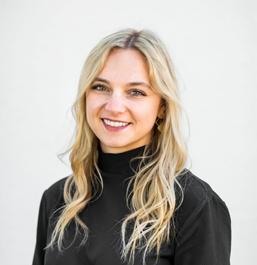

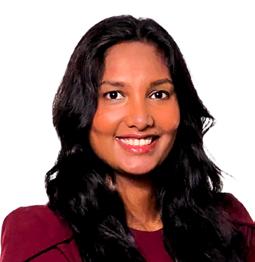
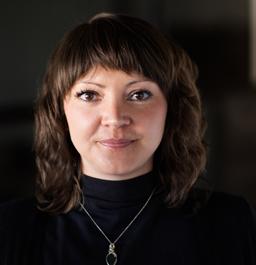
2025-2026 Advocacy Director
Tanya Kataria, AIA, WELL AP | Seattle, WA
Tanya is a Project Architect at Integrus Architecture and Young Architect Forum’s 2025-26 Advocacy Chair. She served as Washington State’s Young Architect Representative and an AIA Washington Council Board Associate 2023-2024. She is part of AIA’s inaugural Next to Lead cohort, advocating for inclusivity within architecture. Tanya also champions a more equitable architectural licensure process for foreign architects and immigrants by sharing her research with state and national organizations to foster change.
2025-2026 Communication Director
Nicole Becker, AIA, NCARB, LEED AP BD+C | Portland, OR
Nicole Becker, AIA, NCARB, LEED AP BD+C, is an Associate at ZGF Architects in Portland, OR, with experience in healthcare and education design. She has served in numerous capacities for the AIA, including Oregon’s 2023-2024 Young Architect Representative and is currently the 2025–2026 Communications Director for the AIA National Young Architects Forum. Inspired by the relationship between the natural and built environments, she strives to cultivate a holistic impact on people and planet.
2025-2026 Knowledge Director
Arlenne Gil, AIA | Orlando, FL
Arlenne is an Architect and Principal at DLR Group, focusing on Higher Education. She has volunteered with AIA for the last decade, as well as a number of other community organizations with a focus on helping to diversify the architecture profession. She was a founding member of Black Architects in the Making-Orlando and served as the “Architect for the Children’s Village of the World” for FusionFest. She is passionate about mentoring students, helping to hone their soft skills and teaching them about the business aspects of architecture. Arlenne previously served as the first Young Architect Representative for AIA Florida.
2026-2027 Community Director
Kumi Wickramanayaka, AIA, NCARB, LEED AP BD+C | Washington DC
Kumi is a Project Architect at Wiencek-Associates and a community advocate passionate about equitable design. Originally from Sri Lanka, she brings a global perspective to her work in affordable housing and architectural advocacy. She is an active leader in AIA|DC Chapter and is involved in CKLDP-DC, Emerging Architects, and Urban Design Committees at the local level. Kumi is committed to building an inclusive and connected architectural community, one that uplifts emerging professionals, celebrates shared growth, and strengthens the future of the profession.
2026-2027 Strategic Vision Director Kaylyn Kirby, AIA, NCARB | Denver, CO
Kaylyn is an Associate Principal at Semple Brown, leading with empathy across mixeduse, residential, office, hospitality, and adaptive reuse projects. Her life has led her from Canada to Louisiana, Minnesota, and Colorado—providing diverse perspectives on people, place, and design. Active in AIA at both the state and national level, she served as Colorado Representative for the Young Architects Forum (2022–2025) and will serve as the YAF Strategic Vision Director for 2026–2027. Kaylyn is passionate about supporting emerging architects and advancing the profession.




Memorandum


Date: April 11, 2025

Memorandum
Memorandum

Governance Task Force Updates
Date: April 11, 2025
Memorandum
To: AIA Board of Directors

Date: April 11, 2025
Memorandum
To: AIA Board of Directors

Memorandum

Date: April
Memorandum
To: AIA Board of Directors

To: AIA Board
Date: April 11, 2025
Memorandum


From: Mickey Jacob, FAIA, Chair, Governance Task Force; Caitlin Couture, CAE, Senior Director, Governance & Awards
Date: April 11, 2025
To: AIA Board of Directors
Date: April 11, 2025
Background
Memorandum
Subject: Update on the Governance Task Force Work

Date: April 11, 2025
To: AIA Board of Directors
Memorandum
Subject: Update on the Governance Task Force Work
Date: April 11, 2025
To: AIA Board of Directors
Memorandum


From: Mickey Jacob, FAIA, Chair, Governance CAE, Senior Director, Governance &
From: Mickey Jacob, FAIA, Chair, Governance Task Force; Caitlin Couture, CAE, Senior Director, Governance & Awards
From: Mickey CAE,
Memorandum
To: AIA Board of Directors

Subject: Update on the Governance Task Force
From: Mickey Jacob, FAIA, Chair, Governance Task Force; Caitlin Couture, CAE, Senior Director, Governance & Awards
Date: April 11, 2025
To: AIA Board of Directors
Date: April 11, 2025
Memorandum
Background
Memorandum

Background
Subject: Update on the Governance Task Force Work
From: Mickey Jacob, FAIA, CAE, Senior Director,
From: Mickey Jacob, FAIA, Chair, Governance Task Force; CAE, Senior Director, Governance & Awards
To: AIA Board of Directors

Date: April To: AIA Board
Memorandum
Subject: Update Background
Subject: Update on the Governance Task Force Work
From: Mickey Jacob, FAIA, Chair, Governance Task Force; Caitlin Couture, CAE, Senior Director, Governance & Awards
Date: April 11, 2025
Memorandum
Background
To: AIA Board of Directors
Subject: Update on the Governance Task Force Work
The Governance Task Force (GTF), was established by the AIA Board of Directors in response to a 2024 resolution approved by the membership, convened for its inaugural meeting on March 31, 2025. The group was formed to assess the effectiveness of AIA’s governance structure, ensure it continues to reflect the needs of the membership, and build on past recommendations particularly those of the Member Voice Task Force (MVTF) with a renewed commitment to transparency, inclusion, and crossorganizational collaboration.
Date: April 11, 2025
Background

From: Mickey
Date: April 11, 2025
Memorandum
Background
To: AIA Board of Directors
Subject: Update on the Governance Task Force Work
Date: April 11, 2025
To: AIA Board of Directors
Background
Governance Task Force:
Background
Subject: Update on the Governance
From: Mickey Jacob, FAIA, Chair, Governance Task Force; Caitlin Couture, CAE, Senior Director, Governance & Awards
Jacob, FAIA, Chair, Governance Task Force; Caitlin Couture, CAE, Senior Director, Governance & Awards
From: Mickey Jacob, FAIA, Chair, Governance CAE, Senior Director, Governance &
From: Mickey CAE,
Memorandum
The Governance Task Force (GTF), was established by the AIA Board of Directors in response to a 2024 resolution approved by the membership, convened for its inaugural meeting on March 31, 2025. The group was formed to assess the effectiveness of AIA’s governance structure, ensure it continues to reflect the needs of the membership, and build on past recommendations particularly those of the Member Voice Task Force (MVTF) with a renewed commitment to transparency, inclusion, and crossorganizational collaboration.
To: AIA Board of Directors
The Governance Task response to a 2024 meeting on March 31, governance structure, build on past recommendations (MVTF) with a renewed organizational collaboration.
Background The Governance Task Force (GTF), was established by the AIA Board of Directors response to a 2024 resolution approved by the membership, convened for its inaugural meeting on March 31, 2025. The group was formed to assess the effectiveness of AIA’s governance structure, ensure it continues to reflect the needs of the membership, and build on past recommendations particularly those of the Member Voice Task Force (MVTF) with a renewed commitment to transparency, inclusion, and crossorganizational collaboration.
The Governance Task Force (GTF), was established response to a 2024 resolution approved by the membership, meeting on March 31, 2025. The group was formed governance structure, ensure it continues to reflect build on past recommendations particularly those (MVTF) with a renewed commitment to transparency, organizational collaboration.
Date: April 11, 2025
Background
Subject: Update on the Governance Task Force Work
To: AIA Board of Directors
The Governance Task Force is charged with working with an external governance consultant and AIA staff to conduct a governance assessment, examine AIA’s current governance structure, and provide recommendations to enhance communication across the Institute and cultivate a culture of trust and transparency.
To: AIA Board of Directors
Subject: Update on the Governance Task Force
The Governance Task Force (GTF), was established by the AIA Board of Directors in response to a 2024 resolution approved by the membership, convened for its inaugural meeting on March 31, 2025. The group was formed to assess the effectiveness of AIA’s governance structure, ensure it continues to reflect the needs of the membership, and build on past recommendations particularly those of the Member Voice Task Force (MVTF) with a renewed commitment to transparency, inclusion, and crossorganizational collaboration.
Subject: Update on the Governance Task Force Work
From: Mickey Jacob, FAIA, Chair, Governance Task Force; Caitlin Couture, CAE, Senior Director, Governance & Awards
Governance Task Force:
Background
From: Mickey Jacob, FAIA, CAE, Senior Director,
From: Mickey Jacob, FAIA, Chair, Governance Task Force; CAE, Senior Director, Governance & Awards
Date: April To: AIA Board
Subject: Update Background
Memorandum
• Mickey Jacob, FAIA, Chair (Former President)
Subject: Update on the Governance Task Force Work
Background
The Governance Task Force (GTF), was established by the AIA Board response to a 2024 resolution approved by the membership, convened meeting on March 31, 2025. The group was formed to assess the effectiveness governance structure, ensure it continues to reflect the needs of the build on past recommendations particularly those of the Member Voice (MVTF) with a renewed commitment to transparency, inclusion, and organizational collaboration.
• Anne Hicks Harney, FAIA (Director at-Large)
The Governance Task Force (GTF), response to a 2024 resolution approved meeting on March 31, 2025. The group governance structure, ensure it continues build on past recommendations particularly (MVTF) with a renewed commitment organizational collaboration.
The Governance Task Force is charged with working with an external governance consultant and AIA staff to conduct a governance assessment, examine AIA’s current governance structure, and provide recommendations to enhance communication across the Institute and cultivate a culture of trust and transparency.
The Governance Task Force is charged with working consultant and AIA staff to conduct a governance assessment, governance structure, and provide recommendations the Institute and cultivate a culture of trust and transparency.
Governance Task Force:
Background
• Mickey Jacob, FAIA, Chair (Former President)
Subject: Update on the Governance Task Force
Date: September 18, 2025
The Governance Task Force is charged with working with an external governance consultant and AIA staff to conduct a governance assessment, examine AIA’s current governance structure, and provide recommendations to enhance communication across the Institute and cultivate a culture of trust and transparency.
• Anthony Rohr, FAIA (Member at-Large/LFRT)
Governance Task Force:
The Governance Task consultant and AIA staff governance structure, the Institute and cultivate Governance Task Force:
Subject: Update on the Governance
Work
• Anne Hicks Harney, FAIA (Director at-Large)
• Carol Rickard-Brideau (Member at-Large/LFRT)
To: AIA members
• Cheryl McAfee, FAIA (Member at-Large)
Background
• Curt Wilson, AIA (Member at-Large)
The Governance Task Force (GTF), was established by the AIA Board of Directors in response to a 2024 resolution approved by the membership, convened for its inaugural meeting on March 31, 2025. The group was formed to assess the effectiveness of AIA’s governance structure, ensure it continues to reflect the needs of the membership, and build on past recommendations particularly those of the Member Voice Task Force (MVTF) with a renewed commitment to transparency, inclusion, and crossorganizational collaboration.
From: Mickey CAE,
From: Mickey Jacob, FAIA, Chair, Governance Task Force; Caitlin Couture, CAE, Senior Director, Governance & Awards
From: Mickey Jacob, FAIA, Chair, Governance CAE, Senior Director, Governance &
• Anthony Rohr, FAIA (Member at-Large/LFRT)
Governance Task Force:
• Darral Tate, AIA (Young Architect/SAC Rep)
Governance Task Force:
• Carol Rickard-Brideau (Member at-Large/LFRT)
Background
• Anne Hicks Harney, FAIA (Director at-Large)
• Gabriella Bermea, AIA (Member Group)
• Mickey Jacob, FAIA, Chair (Former President)
• Cheryl McAfee, FAIA (Member at-Large)
The Governance Task Force is charged with working with an external governance consultant and AIA staff to conduct a governance assessment, examine AIA’s current governance structure, and provide recommendations to enhance communication across the Institute and cultivate a culture of trust and transparency.
• Anthony Rohr, FAIA (Member at-Large/LFRT)
The Governance Task Force is charged consultant and AIA staff to conduct governance structure, and provide recom the Institute and cultivate a culture of
The Governance Task Force is charged with working with an external consultant and AIA staff to conduct a governance assessment, examine governance structure, and provide recommendations to enhance communication the Institute and cultivate a culture of trust and transparency.
The Governance Task Force (GTF), was established by the AIA Board of Directors in response to a 2024 resolution approved by the membership, convened for its inaugural meeting on March 31, 2025. The group was formed to assess the effectiveness of AIA’s governance structure, ensure it continues to reflect the needs of the membership, and build on past recommendations particularly those of the Member Voice Task Force (MVTF) with a renewed commitment to transparency, inclusion, and crossorganizational collaboration.
The Governance Task response to a 2024 meeting on March 31, governance structure, build on past recommendations (MVTF) with a renewed organizational collaboration.
The Governance Task Force (GTF), was established response to a 2024 resolution approved by the membership, meeting on March 31, 2025. The group was formed governance structure, ensure it continues to reflect build on past recommendations particularly those (MVTF) with a renewed commitment to transparency, organizational collaboration.
Subject: Update on the Governance Task Force
• Mickey Jacob,
• Mickey Jacob, FAIA, Chair (Former President)
• Anne Hicks Harney,
• Anne Hicks Harney, FAIA (Director at-Large)
Governance Task Force:
The Governance Task Force (GTF), was established by the AIA Board of Directors in response to a 2024 resolution approved by the membership, convened for its inaugural meeting on March 31, 2025. The group was formed to assess the effectiveness of AIA’s governance structure, ensure it continues to reflect the needs of the membership, and build on past recommendations particularly those of the Member Voice Task Force (MVTF) with a renewed commitment to transparency, inclusion, and crossorganizational collaboration.
• Curt Wilson, AIA (Member at-Large)
Date: To: From: Subject: Background The response meeting governance build (MVTF) organizational The consultant governance the Institute Governance
• Cheryl McAfee, FAIA (Member at-Large)
Subject: Update Background
• Anthony Rohr,
• Anthony Rohr, FAIA (Member at-Large/LFRT)
• Mickey Jacob, FAIA, Chair (Former President)
From: Mickey Jacob, FAIA, Chair, Governance Task Force; Caitlin Couture, CAE, Managing Director, Governance & Awards
• Darral Tate, AIA (Young Architect/SAC Rep)
• Curt Wilson, AIA (Member at-Large)
• Anne Hicks Harney, FAIA (Director at-Large)
• Gabriella Bermea, AIA (Member Group)
Governance Task Force:
• Carol Rickard-Brideau (Member at-Large/LFRT)
• Carol Rickard
• Cheryl McAfee,
• Carol Rickard-Brideau (Member at-Large/LFRT)
• Heather Wilson (CACE 2025 President, Strategic Councilor)
• Cheryl McAfee, FAIA (Member at-Large)
• Anthony Rohr, FAIA (Member at-Large/LFRT)
• Jeffrey Gill, FAIA (CACE Executive Committee)
• Mickey Jacob, FAIA, Chair (Former President)
• Curt Wilson, AIA (Member at-Large)
• Anne Hicks Harney, FAIA (Director at-Large)
The Governance Task Force (GTF), response to a 2024 resolution approved meeting on March 31, 2025. The group governance structure, ensure it continues build on past recommendations particularly (MVTF) with a renewed commitment organizational collaboration.
The Governance Task Force (GTF), was established by the AIA Board response to a 2024 resolution approved by the membership, convened meeting on March 31, 2025. The group was formed to assess the effectiveness governance structure, ensure it continues to reflect the needs of the build on past recommendations particularly those of the Member Voice (MVTF) with a renewed commitment to transparency, inclusion, and organizational collaboration.
• Mickey Jacob, FAIA, Chair (Former
• Curt Wilson,
• Anne Hicks Harney, FAIA (Director
• Gabriella Bermea, AIA (Member Group)
The Governance Task Force is charged with working with an external governance consultant and AIA staff to conduct a governance assessment, examine AIA’s current governance structure, and provide recommendations to enhance communication across the Institute and cultivate a culture of trust and transparency.
The Governance Task Force is charged with working consultant and AIA staff to conduct a governance assessment, governance structure, and provide recommendations the Institute and cultivate a culture of trust and transparency.
• Carol Rickard-Brideau (Member at-Large/LFRT)
Subject: Update on the Governance Task Force Work
• Heather Wilson (CACE 2025 President, Strategic Councilor)
Governance Task Force:
• Cheryl McAfee, FAIA (Member at-Large)
• Jessica O’Donnell, AIA (Strategic Council Moderator)
• Darral Tate, AIA (Young Architect/SAC Rep)
The Governance Task Force is charged with working with an external governance consultant and AIA staff to conduct a governance assessment, examine AIA’s current governance structure, and provide recommendations to enhance communication across the Institute and cultivate a culture of trust and transparency.
• Darral Tate,
• Darral Tate, AIA (Young Architect/SAC Rep)
• Anthony Rohr, FAIA (Member
• Gabriella Bermea,
The Governance Task consultant and AIA staff governance structure, the Institute and cultivate Governance Task Force:
• Carol Rickard-Brideau (Member
• Jeffrey Gill, FAIA (CACE Executive Committee)
• Mickey Jacob, FAIA, Chair (Former President)
• Mickey Jacob, FAIA, Chair (Former
• Curt Wilson, AIA (Member at-Large)
• Anthony Rohr, FAIA (Member at-Large/LFRT)
• Leah Alissa Bayer, AIA (Member at-Large)
• Anne Hicks Harney, FAIA (Director at-Large)
• Gabriella Bermea, AIA (Member Group)
• Nicki Dennis Stephens, Hon. AIA (CACE)
• Jessica O’Donnell, AIA (Strategic Council Moderator)
Governance Task Force:
• Heather Wilson (CACE 2025 President, Strategic
• Heather Wilson
• Cheryl McAfee, FAIA (Member
• Carol Rickard-Brideau (Member at-Large/LFRT)
• Cheryl McAfee, FAIA (Member at-Large)
• Jeffrey Gill, FAIA (CACE Executive Committee)
• Jeffrey Gill, FAIA
• Mickey Jacob,
• Curt Wilson, AIA (Member at
• Darral Tate, AIA (Young Architect/SAC Rep)
• Anthony Rohr, FAIA (Member at-Large/LFRT)
• Leah Alissa Bayer, AIA (Member at-Large)
• Susan Chin, FAIA (Knowledge Community)
The Governance Task Force (GTF), was established response to a 2024 resolution approved by the membership, meeting on March 31, 2025. The group was formed governance structure, ensure it continues to reflect build on past recommendations particularly those (MVTF) with a renewed commitment to transparency, organizational collaboration.
• Jessica O’Donnell, AIA (Strategic Council Moderator)
• Anne Hicks Harney, FAIA (Director at-Large)
• Jessica O’Donnell,
The Governance Task response to a 2024 meeting on March 31, governance structure, build on past recommendations (MVTF) with a renewed organizational collaboration.
• Anne Hicks Harney,
The Governance Task Force (GTF), was established by the AIA Board of Directors in response to a 2024 resolution approved by the membership, convened for its inaugural meeting on March 31, 2025. The group was formed to assess the effectiveness of AIA’s governance structure, ensure it continues to reflect the needs of the membership, and build on past recommendations particularly those of the Member Voice Task Force (MVTF) with a renewed commitment to transparency, inclusion, and crossorganizational collaboration.
The Governance Task Force is charged with working with an external consultant and AIA staff to conduct a governance assessment, examine governance structure, and provide recommendations to enhance communication the Institute and cultivate a culture of trust and transparency.
• Darral Tate, AIA (Young Architect/SAC
The Governance Task Force is charged consultant and AIA staff to conduct governance structure, and provide recom the Institute and cultivate a culture of
• Gabriella Bermea, AIA (Member Group)
• Leah Alissa Bayer, AIA (Member at-Large)
• Nicki Dennis Stephens, Hon. AIA (CACE)
• Leah Alissa
• Anthony Rohr, FAIA (Member at-Large/LFRT)
• Anthony Rohr,
• Gabriella Bermea, AIA (Member
• Carol Rickard-Brideau (Member at-Large/LFRT)
The Governance Task Force is charged with working with an external governance consultant and AIA staff to conduct a governance assessment, examine AIA’s current governance structure, and provide recommendations to enhance communication across the Institute and cultivate a culture of trust and transparency.
• Nicki Dennis Stephens, Hon. AIA (CACE)
• Heather Wilson (CACE 2025 President, Strategic Councilor)
Governance Task Force:
• Cheryl McAfee, FAIA (Member at-Large)
• Susan Chin, FAIA (Knowledge Community)
• Curt Wilson, AIA (Member at-Large)
• Susan Wyeth, AIA (Resolution Sponsor)
Governance Task Force:
• Jeffrey Gill, FAIA (CACE Executive Committee)
Mickey Jacob, FAIA, Chair (Former President)
• Darral Tate, AIA (Young Architect/SAC Rep)
• Carol Rickard
• Carol Rickard-Brideau (Member at-Large/LFRT)
• Nicki Dennis
• Cheryl McAfee, FAIA (Member at-Large)
• Susan Wyeth, AIA (Resolution Sponsor)
• Curt Wilson, AIA (Member at-Large)
Anne Hicks Harney, FAIA (Director at-Large)
Governance Task Force:
• Heather Wilson (CACE 2025 President, Strategic Councilor)
• Jessica O’Donnell, AIA (Strategic Council Moderator)
• Timothy Hawk, FAIA (Past Board of Directors)
• Heather Wilson (CACE 2025
• Mickey Jacob, FAIA, Chair (Former President)
• Jeffrey Gill, FAIA (CACE Executive Committee)
• Leah Alissa Bayer, AIA (Member at-Large)
• Gabriella Bermea, AIA (Member Group)
The Governance Task Force (GTF) convened on September 8, 2025, to advance its work on AIA’s governance assessment. The meeting focused on evaluating current and proposed governance models, clarifying the roles and responsibilities of governing bodies, and refining preliminary recommendations for communication, transparency, and accountability. Building on the work of the Strategic Council’s 10-Year Evaluation Study Group and the task force’s previous deliberations, the discussion was designed to align around a shared vision for AIA’s governance structure.
• Susan Chin, FAIA (Knowledge Community)
• Cheryl McAfee,
• Susan Chin,
• Curt Wilson, AIA (Member at-Large)
• Susan Wyeth, AIA (Resolution Sponsor)
• Darral Tate, AIA (Young Architect/SAC Rep)
• Jeffrey Gill, FAIA (CACE Executive
• Mickey Jacob, FAIA, Chair (Former
• Jessica O’Donnell, AIA (Strategic Council Moderator)
• Anne Hicks Harney, FAIA (Director at-Large)
• Timothy Hawk, FAIA (Past Board of Directors)
Anthony Rohr, FAIA (Member at-Large/LFRT)
• Curt Wilson,
• Susan Wyeth,
• Jessica O’Donnell, AIA (Strategic
• Anne Hicks Harney, FAIA (Director
• Leah Alissa Bayer, AIA (Member at-Large)
• Nicki Dennis Stephens, Hon. AIA (CACE)
Governance Task Force:
The Governance Task Force is charged with working consultant and AIA staff to conduct a governance assessment, governance structure, and provide recommendations the Institute and cultivate a culture of trust and transparency.
• Gabriella Bermea, AIA (Member Group)
• Darral Tate,
• Anthony Rohr, FAIA (Member at-Large/LFRT)
• Carol Rickard-Brideau (Member at-Large/LFRT)
• Heather Wilson (CACE 2025 President, Strategic Councilor)
• Timothy Hawk, FAIA (Past Board of Directors)
The Governance Task Force is charged with working with an external governance consultant and AIA staff to conduct a governance assessment, examine AIA’s current governance structure, and provide recommendations to enhance communication across the Institute and cultivate a culture of trust and transparency.
• Darral Tate, AIA (Young Architect/SAC Rep)
• Timothy Hawk,
• Gabriella Bermea, AIA (Member Group)
• Anthony Rohr, FAIA (Member
• Leah Alissa Bayer, AIA (Member
• Nicki Dennis Stephens, Hon. AIA (CACE)
• Gabriella Bermea,
• Carol Rickard-Brideau (Member at-Large/LFRT)
Governance Task Force:
• Susan Chin, FAIA (Knowledge Community)
• Cheryl McAfee, FAIA (Member at-Large)
• Mickey Jacob, FAIA, Chair (Former President)
• Carol Rickard-Brideau (Member
• Heather Wilson (CACE 2025 President, Strategic Councilor)
• Jeffrey Gill, FAIA (CACE Executive Committee)
• Nicki Dennis Stephens, Hon.
• Heather Wilson
The Governance Task consultant and AIA staff governance structure, the Institute and cultivate Governance Task Force:
• Heather Wilson (CACE 2025 President, Strategic
• Susan Chin, FAIA (Knowledge Community)
• Susan Chin, FAIA (Knowledge
• Mickey Jacob, FAIA, Chair (Former President)
• Cheryl McAfee, FAIA (Member
• Jeffrey Gill, FAIA (CACE Executive Committee)
• Anne Hicks Harney, FAIA (Director at-Large)
• Curt Wilson, AIA (Member at-Large)
• Susan Wyeth, AIA (Resolution Sponsor)
• Jessica O’Donnell, AIA (Strategic Council Moderator)
• Cheryl McAfee, FAIA (Member at-Large) Curt Wilson, AIA (Member at-Large)
• Susan Wyeth, AIA (Resolution Sponsor)
• Darral Tate, AIA (Young Architect/SAC Rep)
• Jeffrey Gill, FAIA (CACE Executive Committee)
• Anne Hicks Harney, FAIA (Director at-Large)
• Jeffrey Gill, FAIA
• Mickey Jacob, FAIA, Chair (Former President)
• Mickey Jacob,
• Susan Wyeth, AIA (Resolution
• Jessica O’Donnell, AIA (Strategic Council Moderator)
• Leah Alissa Bayer, AIA (Member at-Large)
Key Discussion Areas and Outcomes
• Anthony Rohr, FAIA (Member at-Large/LFRT)
• Timothy Hawk, FAIA (Past Board of Directors)
• Nicki Dennis Stephens, Hon. AIA (CACE)
• Carol Rickard-Brideau (Member at-Large/LFRT)
• Gabriella Bermea, AIA (Member Group)
• Jessica O’Donnell, AIA (Strategic Council Moderator)
• Anthony Rohr, FAIA (Member at-Large/LFRT)
• Anne Hicks Harney,
• Anne Hicks Harney, FAIA (Director at-Large)
• Jessica O’Donnell,
Darral Tate, AIA (Young Architect/SAC Rep)
• Timothy Hawk, FAIA (Past Board of Directors)
• Leah Alissa Bayer, AIA (Member at-Large)
• Timothy Hawk, FAIA (Past Board
• Curt Wilson, AIA (Member at Darral Tate, AIA (Young Architect/SAC
• Leah Alissa Bayer, AIA (Member at-Large)
• Gabriella Bermea, AIA (Member Group)
• Carol Rickard-Brideau (Member at-Large/LFRT)
• Nicki Dennis Stephens, Hon. AIA (CACE)
• Cheryl McAfee, FAIA (Member at-Large)
• Susan Chin, FAIA (Knowledge Community)
• Anthony Rohr, FAIA (Member at-Large/LFRT)
• Leah Alissa Bayer,
• Anthony Rohr,
• Gabriella Bermea, AIA (Member
• Nicki Dennis Stephens, Hon. AIA (CACE)
• Heather Wilson (CACE 2025 President, Strategic Councilor)
• Cheryl McAfee, FAIA (Member at-Large)
• Curt Wilson, AIA (Member at-Large)
• Carol Rickard-Brideau (Member at-Large/LFRT)
• Susan Chin, FAIA (Knowledge Community)
• Susan Wyeth, AIA (Resolution Sponsor)
• Nicki Dennis
• Carol Rickard
• Heather Wilson (CACE 2025
• Heather Wilson (CACE 2025 President, Strategic Councilor)
• Jeffrey Gill, FAIA (CACE Executive Committee)
• Governance Structure Current and Future State: The group reviewed the current Board and Council composition, terms, election processes, and responsibilities. They considered three proposed models designed to address
• Cheryl McAfee, FAIA (Member at-Large)
• Susan Chin, FAIA (Knowledge Community)
• Curt Wilson, AIA (Member at-Large)
• Susan Chin,
• Cheryl McAfee,
• Jeffrey Gill, FAIA (CACE Executive Committee)
• Susan Wyeth, AIA (Resolution Sponsor)
• Jeffrey Gill, FAIA (CACE Executive
• Curt Wilson, AIA (Member at-Large)
• Susan Wyeth, AIA (Resolution Sponsor)
• Jessica O’Donnell, AIA (Strategic Council Moderator)
• Timothy Hawk, FAIA (Past Board of Directors)
• Darral Tate, AIA (Young Architect/SAC Rep)
• Darral Tate, AIA (Young Architect/SAC Rep)
• Timothy Hawk, FAIA (Past Board of Directors)
• Susan Wyeth,
• Curt Wilson,
• Jessica O’Donnell, AIA (Strategic Council Moderator)
• Jessica O’Donnell, AIA (Strategic
• Darral Tate, AIA (Young Architect/SAC Rep)
• Timothy Hawk,
• Darral Tate,
• Timothy Hawk, FAIA (Past Board of Directors)
Key Discussion Areas and Outcomes
Memorandum
• Governance Structure Current and Future State: The group reviewed the current Board and Council composition, terms, election processes, and responsibilities. They considered three proposed models designed to address culture, strategy making and integration of various member groups across the AIA’s structure. Members of the task force emphasized the need for clarity in representation versus strategy versus visionary to reaffirm the Council’s representational role while exploring mechanisms to strengthen its advisory function to the Board.
Date: April 11, 2025
AIA Board of Directors
• Emerging Themes: The task force discussions led to early consensus around three main areas:
From: Mickey Jacob, FAIA, Chair, Governance Task Force; Caitlin Couture, CAE, Senior Director, Governance & Awards
Subject: Update on the Governance Task Force Work
Date: April 11, 2025
Background
o Board composition and roles: There is broad support for making adjustments to the Board composition to provide for continuity, assessing the pathway for Directors at-Large, establishing stronger commitments to member engagement and creating an ex officio, voting position on the Board for the Strategic Council moderator.
o Council composition and roles: The group agreed that it would be beneficial to clarify the Council’s representative role, strengthen accountability tools, and ensure effective communication with members.
AIA Board of Directors
From: Mickey Jacob, FAIA, Chair, Governance Task Force; Caitlin Couture, CAE, Senior Director, Governance & Awards
o Two-way communication: Strong endorsement for standardized reporting, clear feedback loops, and governance training across leadership groups, along with consistent pathways for leaders to connect with stakeholders
Subject: Update on the Governance Task Force Work
Page 1 of 2 proposed governance models, clarifying the roles and responsibilities of governing bodies, and refining preliminary recommendations for communication, transparency, and accountability. Building on the work of the Strategic Council’s 10-Year Evaluation Study Group and the task force’s previous deliberations, the discussion was designed to align around a shared vision for AIA’s governance structure.
Governance Task Force (GTF), was established by the AIA Board of Directors in response to a 2024 resolution approved by the membership, convened for its inaugural meeting on March 31, 2025. The group was formed to assess the effectiveness of AIA’s governance structure, ensure it continues to reflect the needs of the membership, and build on past recommendations particularly those of the Member Voice Task Force (MVTF) with a renewed commitment to transparency, inclusion, and crossorganizational collaboration.
Background
Governance Task Force is charged with working with an external governance consultant and AIA staff to conduct a governance assessment, examine AIA’s current governance structure, and provide recommendations to enhance communication across Institute and cultivate a culture of trust and transparency.
Governance Task Force:
• Communication and Collaboration: The task force feels strongly that there is a need for consistent communication across AIA volunteer groups to support clear engagement rules and feedback mechanisms as a way to build trust across the Institute In a future meeting, the task force agreed to refine their recommendations into a RACI (Responsible, Accountable, Consulted, Informed) model to delineate responsibilities across governance bodies and to identify priority areas for 2026, including strengthening trust, member engagement, and transparent decision-making
Next Steps
• Mickey Jacob, FAIA, Chair (Former President)
• Anne Hicks Harney, FAIA (Director at-Large)
Governance Task Force (GTF), was established by the AIA Board of Directors in response to a 2024 resolution approved by the membership, convened for its inaugural meeting on March 31, 2025. The group was formed to assess the effectiveness of AIA’s governance structure, ensure it continues to reflect the needs of the membership, and build on past recommendations particularly those of the Member Voice Task Force (MVTF) with a renewed commitment to transparency, inclusion, and crossorganizational collaboration.
The September meeting advanced the Governance Task Force’s work toward a more transparent, accountable, and member-driven governance structure. The upcoming work to be done includes:
• Anthony Rohr, FAIA (Member at-Large/LFRT)
• Carol Rickard-Brideau (Member at-Large/LFRT)
• Incorporate feedback from the September 8 session into a refined governance model for the task force’s meeting on September 29.
• Cheryl McAfee, FAIA (Member at-Large)
• Curt Wilson, AIA (Member at-Large)
Governance Task Force is charged with working with an external governance consultant and AIA staff to conduct a governance assessment, examine AIA’s current governance structure, and provide recommendations to enhance communication across Institute and cultivate a culture of trust and transparency.
• Share an update with the AIA Board of Directors on progress and preliminary recommendations
• Darral Tate, AIA (Young Architect/SAC Rep)
• Gabriella Bermea, AIA (Member Group)
Governance Task Force:
• Heather Wilson (CACE 2025 President, Strategic Councilor)
• Prepare for the September 29 Governance Task Force meeting to finalize the proposed governance model and communication framework before broader stakeholder engagement.
Mickey Jacob, FAIA, Chair (Former President)
• Jeffrey Gill, FAIA (CACE Executive Committee)
• Jessica O’Donnell, AIA (Strategic Council Moderator)
Anne Hicks Harney, FAIA (Director at-Large)
• Engage the full Strategic Council Assembly in October to review preliminary recommendations and gather input.
• Leah Alissa Bayer, AIA (Member at-Large)
Anthony Rohr, FAIA (Member at-Large/LFRT)
• Connect with AIA members in a series of forums this fall to collect feedback.
• Nicki Dennis Stephens, Hon. AIA (CACE)
• Carol Rickard-Brideau (Member at-Large/LFRT)
• Susan Chin, FAIA (Knowledge Community)
• Cheryl McAfee, FAIA (Member at-Large)
• Curt Wilson, AIA (Member at-Large)
• Susan Wyeth, AIA (Resolution Sponsor)
Assessment Feedback
• Timothy Hawk, FAIA (Past Board of Directors)
• Darral Tate, AIA (Young Architect/SAC Rep)
Feedback and questions related to the Governance Task Force’s work can be submitted through the Governance Assessment Feedback link Additionally, the task force will hold forums for input, which will be announced this fall.
• Gabriella Bermea, AIA (Member Group)
• Heather Wilson (CACE 2025 President, Strategic Councilor)
• Jeffrey Gill, FAIA (CACE Executive Committee)
• Jessica O’Donnell, AIA (Strategic Council Moderator)
THE HERITAGE SOCIETY OF THE AIA COLLEGE OF FELLOWS
WhatwillyourLegacybe?
The primary purpose of the Society is to formally recognize those individuals who have demonstrated a life-long commitment to the mission and programs of the AIA College of Fellows with a revocable estate bequest.
By virtue of having included a commitment in their estate plan of a bequest for the future benefit of the College and its programs, the following distinguished individuals are the Members of the Heritage Society of the AIA College of Fellows:
Joseph A. Boggs, FAIA
Ellis W. Bullock, FAIA
John A. Busby, Jr., FAIA
Donald Wesley Caskey, FAIA
John Castellana, FAIA
William David Chilton, FAIA
Betsey Olenick Dougherty, FAIA
Brian Paul Dougherty, FAIA
Harry M. Falconer, Jr., FAIA
Dr. Robert Allen Findlay, FAIA
L. Jane Hastings, FAIA*
Russell V. Keune, FAIA
Ed Kodet, FAIA
Lisa Lamkin, FAIA
Howarth L. Lewis, Jr., FAIA
Ivenue Love-Stanley, FAIA
Frank Lucas, FAIA*
Robert Ooley, FAIA
Burton L. Roslyn, FAIA
Jeffrey Scherer, FAIA
Roger L. Schluntz, FAIA
John Sorrenti, FAIA
Steven Spurlock, FAIA
William J. Stanley, III, FAIA
Ed Vance, RA
William F. Vosbeck, FAIA
Membership in the Society is conferred upon formal notification to the College of a planned estate gift with a minimum value of $10,000.
We cordially invite you to undertake a similar, revocable, commitment in your estate plan, and thereby becoming a member of the Heritage Society. It’s simple to accomplish and it costs nothing!
With additional Members the future support of our programs and long-term viability of the College will be substantially enhanced and extended well into the future. For additional information and application, please contact Muza Conforti, cof@aia.org.
*Denotes a deceased member.
2025
Fellows Remembered
Adolfo Miralles, FAIA
Fleming Wood Smith, Jr., FAIA
David G. Jepson, FAIA
Terry Farrell, FAIA
Nicholas T. Grimshaw, FAIA
Michael B. Burch, FAIA
Joseph John Wisnewski, FAIA
Robert Odermatt, FAIA
Paula Burns McEvoy, FAIA
Franklin T. Ferguson, FAIA
Harry Granville Robinson III, FAIA
Graham Gund, FAIA
Robert Franklin Brown, FAIA
Hugh Clark Miller, FAIA
Jodi dan der Wiel, FAIA
Charles M. Davis, FAIA
David M. Childs, FAIA
Barbara (Bobbie) Goldberg Neski, FAIA
John Edward Mahlum, FAIA
Raymond ("Skipper") George Post, Jr. FAIA
Danie Johnson, FAIA
Ronald Gene Brown, FAIA
David E. Sellers, FAIA
James R. Grieves, FAIA
Dean Bahr, FAIA
Robert Stanley George, FAIA
Gretchen K. Pfaehler, FAIA
James D. "Jimmy" Tittle, FAIA
2024
Freidrich St. Florian, FAIA
Yoshio Taniguchi, FAIA
David E. Lawson, FAIA
Curtis J. Moody, FAIA
Roger K. Lewis, FAIA
Henry G. Meier, FAIA
John Q. Lawson, FAIA
James Gatch, FAIA
Howard Backen, FAIA
Chiu Tse-Chan, FAIA
Ronald Wommack, FAIA
Stan Boles, FAIA
Michael Watson, FAIA
Wayne S. Schmidt, FAIA
Aric Lasher, FAIA
Charles "Chuck" Schwing, FAIA
Doris Danna, FAIA
Benjamin H. Weese, FAIA
Tom Posedly, FAIA
Leonard S. Wicklund, FAIA
L. Jane Hastings, FAIA
Lee Hahnfeld, FAIA
Frank Hope, III, FAIA
Charles E. Dagnit, Jr. FAIA
David Body, FAIA
Harry Kennard Bussard, FAIA
George W. Acock, FAIA
Ryamond Grenald, FAIA
Antione Predock, FAIA
Roscoe Reeves, Jr. FAIA
David Holtz, FAIA
Clyde Warner, FAIA
Marsha Maytum, FAIA
John W. Weekes FAIA
William N. Larson, FAIA
H. Carelton Godsey, Jr, FAIA
Les Tincknell, FAIA
C. Robert Campbell, FAIA
I. Donald Weston, FAIA
Emanuel Kelly, FAIA
Dwight E. Holmes, FAIA
Contributors to the College of Fellows Fund
2025 Donors
(Contributions of $500 or more shown in BOLD FACE)
Every organization draws its strength from the dedication and vision of those who invest in its future, and the AIA College of Fellows truly exemplifies this commitment. The remarkable generosity shown by our Fellows enables meaningful progress, fostering new discoveries, supporting rising talent, and advancing our profession. With each contribution, you directly help shape the future of our field and make a real difference in the lives touched by our work.
To celebrate and sustain this powerful momentum, the Executive Committee now highlights individual Fellow’s generosity in every issue of the Quarterly. The impact of your investment inspires others to join in and amplifies our collective achievements—giving together helps us accomplish even more.
Our Executive Director maintains records of lifetime investments, allowing Fellows to measure their journey toward Legacy status, a distinction that honors lasting commitment. If you would like to learn how close you are to reaching this special milestone, please do not hesitate to contact Muza Conforti at cof@aia.org
Let us continue to invest with generosity and purpose, confident that every contribution fortifies our community and unlocks new opportunities for mentorship, innovation, and the advancement of leadership in our field. By supporting these initiatives, we help inspire future generations and amplify the collective voice of the profession. The more we give—and encourage others to give—the greater our shared impact becomes, empowering us all to achieve and sustain excellence for years to come.

ARIZONA
Henry Tom
CALIFORNIA
Gordon Chong
Ida Clair
Betsey Olenick Dougherty
Brian Dougherty
Mary Follenweider
Craig Hamilton
Frederick Marks
Paul Menard
Michael Stanton
Paul Woolford
Francis Zwart
COLORADO
Sarah Broughton
Gregory Friesen
Alan G. Gass
Elizabeth Hallas
R Randall Vosbeck
CONNECTICUT
Gina Calabro
Giancarlo Alhadeff
Jonathan Humble
Jim Lawler
DISTRICT OF COLUMBIA
Abigail Brown
David Haresign
Jonathan Herz
Benjamin Kasdan
Lenore Lucey
Jonathan Penndorf
Andrew Pressman
Steven Spurlock
FLORIDA
Randall Atlas
Stephen Ayers
Richard Bacon
Gregory Burke
Nathan Butler
Charles Clary
Charles Cole
Martin Diaz-Yabor
John Ehrig
Michael Halflants
Bill Hercules
Jeffrey Huber
Daniel Kirby
David Metzger
Keith Lashley
Ted Pappas
Clemens Schaub
Natividad Soto
GEORGIA
Mark Levine
Contributors to the College of Fellows Fund
2025 Donors
(Contributions of $500 or more shown in BOLD FACE)
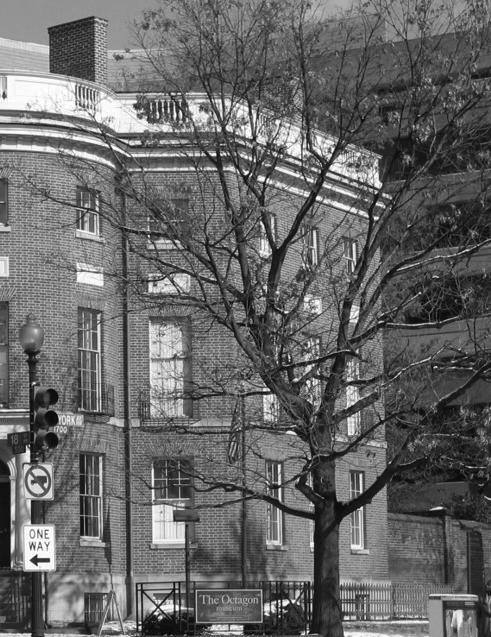
ILLINOIS
Martha Bell
Carl D'Silva
Walter Eckenhoff
Donald Hacki
Helen Kessler
John Syvertsen
INDIANA
Sanford Garner
Lisa Gomperts
IOWA
Kate Schwennsen
LOUISIANA
Ronald Blitch
MASSACHUSETTS
Emily Grandstaff-Rice
Thomas Hartman
Peter Kuttner
Britt Lindberg
William Rhul
David Silverman
Louis Sirianni
Carole Wedge
MARYLAND
Lance Davis
Carl Elefante
Kathleen Lechleiter
Albert Rubeling
Walter Schamu
Randy Sovich
Randy Steiner
Karl Stumpf
Bryce Turner
MICHIGAN
Timothy Casai
John Castellana
James Chaffers
Alan Cobb
Brian Craig
Jan Culbertson
Michael Guthrie
Douglas Hanna
William Hartman
Rainy Hamilton
Jeffrey Hausman
Eugene Hopkins
Dennis King
Elisabeth Knibbe
Bryan Lijewski
J. Stuart Pettitt
Cynthia Pozolo
David Richards
Victor Saroki
Tod Stevens
Benedetto Tiseo
Robert Ziegelman
Dawn Zuber
MINNESOTA
Thomas Cox
Edward Kodet
Rosemary McMonigal
NORTH CAROLINA
Irvin Pearce
Dennis Stallings
NORTH DAKOTA
Susan Schaefer Kliman
NEW JERSEY
Glenn Goldman
Robin Murray
NEW MEXICO
Roger Schluntz
NEVADA
Gregory Erny
J. Windom Kimsey
Charles Kubat
Jonathan Sparer
Brandon Sprague
Edward Vance
NEW YORK
Margaret Carney
Todd Dalland
Frances Halsband
Laura Heim
George Miller
John Sorrenti
OHIO
Douglas Gallow, Jr.
Bruce Sekanick
OKLAHOMA
Ellis McIntosh
Fred Schmidt
OREGON
Roderick Ashley
Kay Raskin
PENNSYLVANIA
Sylvester Daminaos
Muautrrn Guttman
Don Jones
Susan Maxman
Christine Mondor
RHODE ISLAND
Erik L'Heureux
SOUTH CAROLINA
David Moore
Thompson Penney
TENNESSEE
David Powell
TEXAS
Norman Alston
Elizabeth Chu Richter
Julie Hiromoto
Gregory Ibanez
Lisa Lamkin
Jeffrey Potter
Ronald Skaggs
Cynthia Walston
Alfred Vidaurri
UTAH
RK Stewart
Jeanne Jackson
VIRGINIA
Corey Clayborne
Muza Conforti
Helene Dreiling
Brian Frickie
Robert Holzbach
M. Celeste Novak
Kathryn Prigmore
Nicholas E. Vlattas
WASHINGTON
Robert Findlay
Douglas Ito
Mary Johnston
Raymond Johnston
Burcin Moehring
Anne Schopf
WISCONSIN
John Horky
Lisa Kennedy
WYOMING
John Carney
FIRMS & COMPANIES
Architecture Joyce Owens LLC
*Denotes a deceased member.
Legacy Donors of the
AIA College of Fellows
LEGACY DONORS
($10,000 and above cumulative donations)
New 2024 Legacy Members shown in Bold Face
LEGACY 50
($50,000 and above)
Frank E. Lucas, FAIA*
LEGACY 40
($40,000-$49,999)
L. Jane Hastings, FAIA*
Jeanne Jackson, FAIA
Edward J. Kodet Jr., FAIA
Victor A. Regnier, FAIA
Roger Schluntz, FAIA
LEGACY 30
($30,000-$39,999)
Harold L. Adams, FAIA
S. A. Klatskin, FAIA
John R. Klai II, FAIA*
Peter P. Marino, FAIA
Donald E. Neptune, FAIA
Robert L. Ooley, FAIA
Ronald L. Skaggs, FAIA
Joseph G. Sprague, FAIA
John Sorrenti, FAIA
Steven L. Spurlock, FAIA
LEGACY 20
($20,000-$29,999)
Betsey Olenick Dougherty, FAIA
Brian P. Dougherty, FAIA
Donald J. Hackl, FAIA
Ivenue Love-Stanley, FAIA
Lenore M. Lucey, FAIA
Robert A. Odermatt, FAIA
Ted P. Pappas, FAIA
William J. Stanley, FAIA
William F. Vosbeck, FAIA
LEGACY 10
($10,000-$19,999)
Ronald A. Altoon, FAIA
Louis D. Astorino, FAIA
Paul H. Barkley, FAIA
Sigmund F. Blum, FAIA*
Joseph Boggs, FAIA
Ellis W. Bullock, FAIA
John A. Busby Jr., FAIA
Donald W. Caskey, FAIA
John J. Castellana, FAIA
William D. Chilton, FAIA
Gary B. Coursey, FAIA
Sylvester Damianos, FAIA
William A. Edgerton, FAIA
Michael Enomoto, FAIA
Thomas B. Gerfen, FAIA
Debra Gerod, FAIA
Manuel G. Gonzalez, FAIA
Graham Gund, FAIA*
Daniel Hart, FAIA
John F. Hartray Jr., FAIA
Russell V. Keune, FAIA
Stephen J. Kieran, FAIA
Peter G. Kuttner, FAIA
Norman L. Koonce, FAIA
Carroll J. Lawler, FAIA
Lawrence J. Leis, FAIA
Rev. Howarth L. Lewis, FAIA
Paula J. Loomis, FAIA
Steven Loomis, FAIA
William Mahan, FAIA
Marvin J. Malecha, FAIA
Clark D. Manus, FAIA
Judsen R. Marquardt, FAIA
George H. Miller, FAIA
Amy Miller Dowell, FAIA
John Pearce, FAIA
Thompson E. Penney, FAIA
Raymond G. Post Jr., FAIA*
William A. Rose Jr., FAIA*
Burton Roslyn, FAIA
Albert W. Rubeling Jr., FAIA
Harry Rutledge, FAIA
John A. Ruffo, FAIA
Jeffrey A. Scherer, FAIA
Bruce Sekanick, FAIA
Robert I. Selby, FAIA
Jim M. Singleton IV, FAIA
Kalavati Somvanshi, FAIA
Jonathan Sparer, FAIA
Douglas L. Steidl, FAIA
RK Stewart, FAIA
Kim M. Tanzer, FAIA
James D. Tittle, FAIA
Edward T. M. Tsoi, FAIA
Edward A. Vance, RA
R. Randall Vosbeck, FAIA
Chester A. Widom, FAIA
Douglas Wignall, FAIA
Joseph J. Wisnewski, FAIA
F.M. Wong, FAIA
Enrique A. Woodroffe, FAIA
Hofu Wu, FAIA
Raymond Ziegler, FAIA
*Denotes a deceased member.

